Eagle eyed followers of certain pro riders may have spotted some curious footwear. What brand could they be? Instagram queries to the likes of Fabio Wibmer about what shoes were in pictures directed readers to @QuestionmarkMTB which turns out to have been a ruse by crankbrothers to throw people off the scent – or maybe create some hype? Despite COVID playing havoc with deliveries, we’ve managed to get the gang out on some of the new crankbrothers shoe range for a week or so, so let’s check out the range and our first impressions.
There are nine shoes in the range – six clippy ones, and three flat ones – and you can see the full crankbrothers shoe range and all the design history in this feature. There are no disco slippers here – they’re being marketed by the likes of Bernard Kerr and Fabio Wibmer, so they’re designed for flat pedals, or downhill/enduro style clippy pedals with a platform. The key difference between the three in each pedal-type lineup is the means of attaching them to your feet, and each method attracts a different price. The clippy shoes come in a Mallet and Mallet E option – the E being aimed more at trail/enduro with a slightly stiffer shank and deeper tread for walking, while the Mallet has an extended cleat ‘race track’ for stability while descending – so is more for enduro/downhill. This reflects the habits of some pros, who have been cutting out the soles on their shoes to create more space for their cleats to get their feet further forward over the pedals. On both clippy shoes, the exit and entry to the cleat is ramped to help guide your foot into place – whether from the front or rear. Broadly speaking, the Mallet and Stamp shoes are of the same stiffness, and if one shoe fits you, then all the others in that size should too – there’s no difference in the shape of the last.
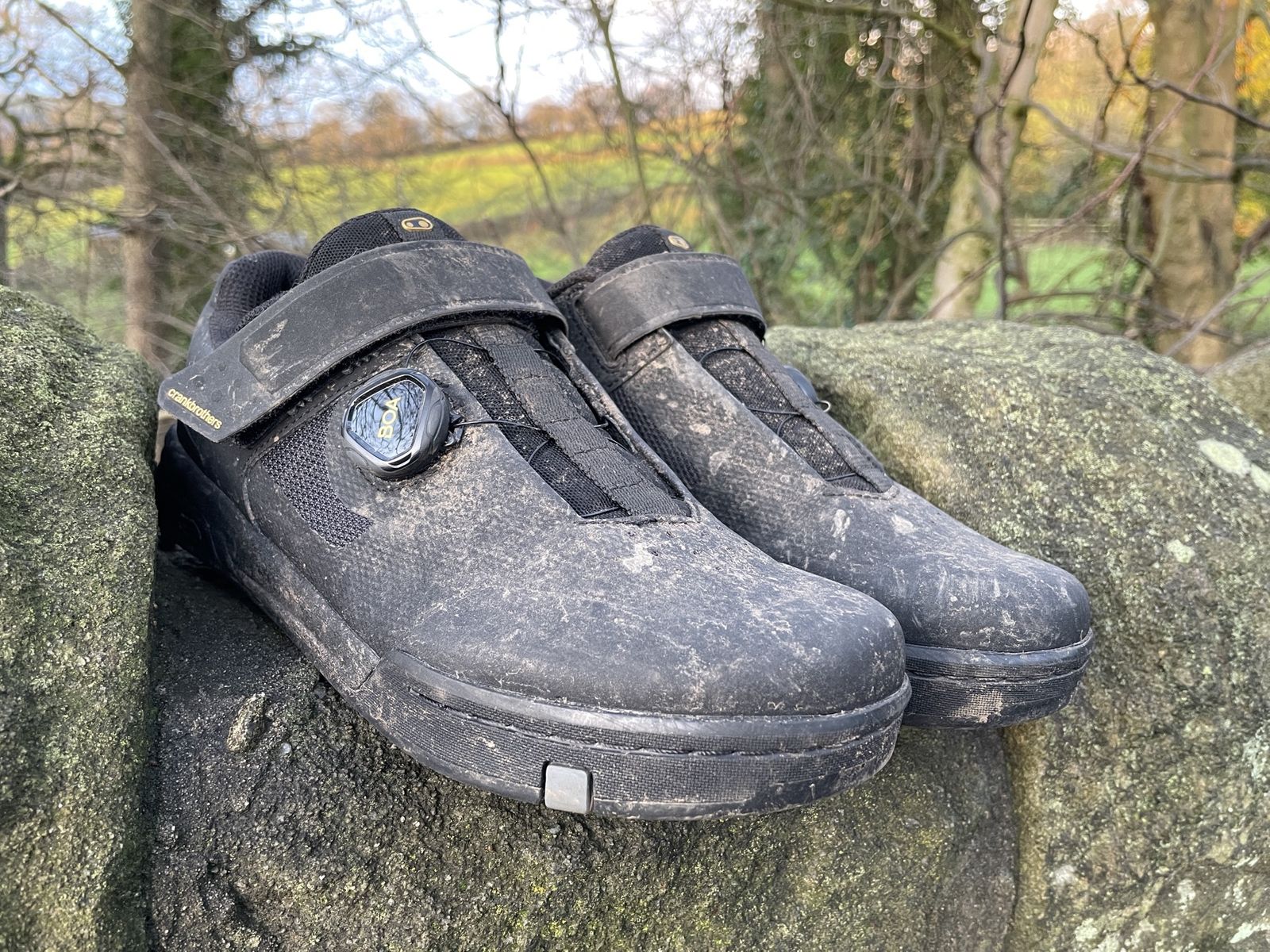
Crankbrothers Shoes – The Choices
Flats
- Stamp BOA – £164.99
- Stamp Speedlace – £134.99
- Stamp Lace – £114.99
Clips
- Mallet BOA – £179.99
- Mallet E BOA – £179.99
- Mallet Speedlace – £149.99
- Mallet E Speedlace – £149.99
- Mallet Lace – £129.99
- Mallet E Lace – £129.99
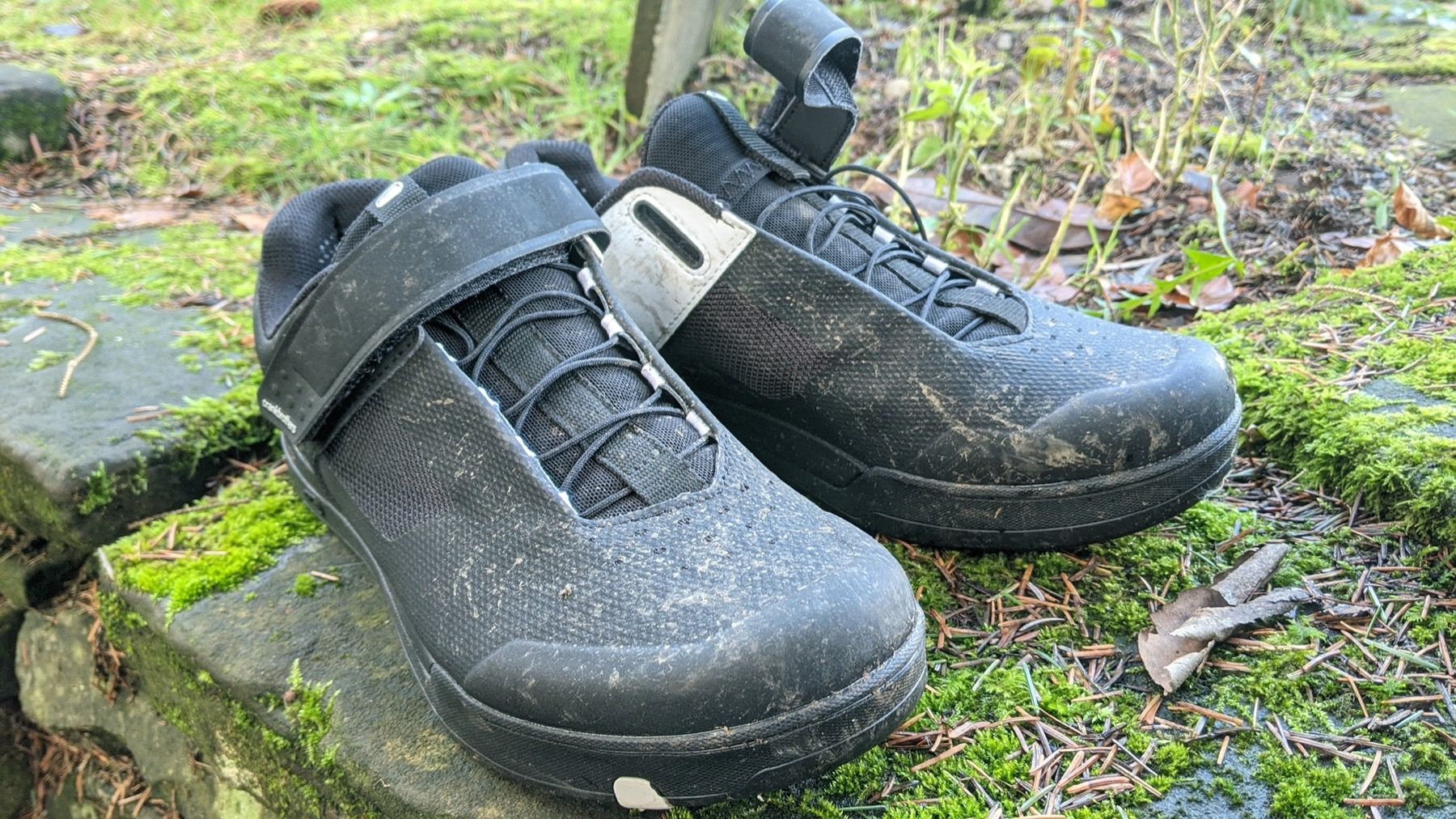
The shoes are designed to mate with crankbrothers pedals, but not to the extent that you can’t run them with different ones. So, if you want to have a different shoe and pedal sponsor, in theory, you can. The clip pedals come with cleats though – so if you’re not running crankbrothers pedals you may need to provide your own cleats, depending on compatibility.
Crankbrothers Shoes: Clips on The Trail
Let’s start with the clippy shoes. Jason Miles took to the wilds of Scotland in the Mallet Speedlace shoes for some wintry condition testing.
Jason says:
At this time of year I’m normally wearing waterproof, substantial winter boots so a few rides in ‘normal’ shoes in a particularly cold and wet spell of weather wasn’t filling me with enthusiasm. Yes, my feet got wet, but thankfully not as cold as I was expecting. The uppers of the Mallets are fairly weatherproof – just don’t expect them to shrug off the damp for longer than a few minutes.
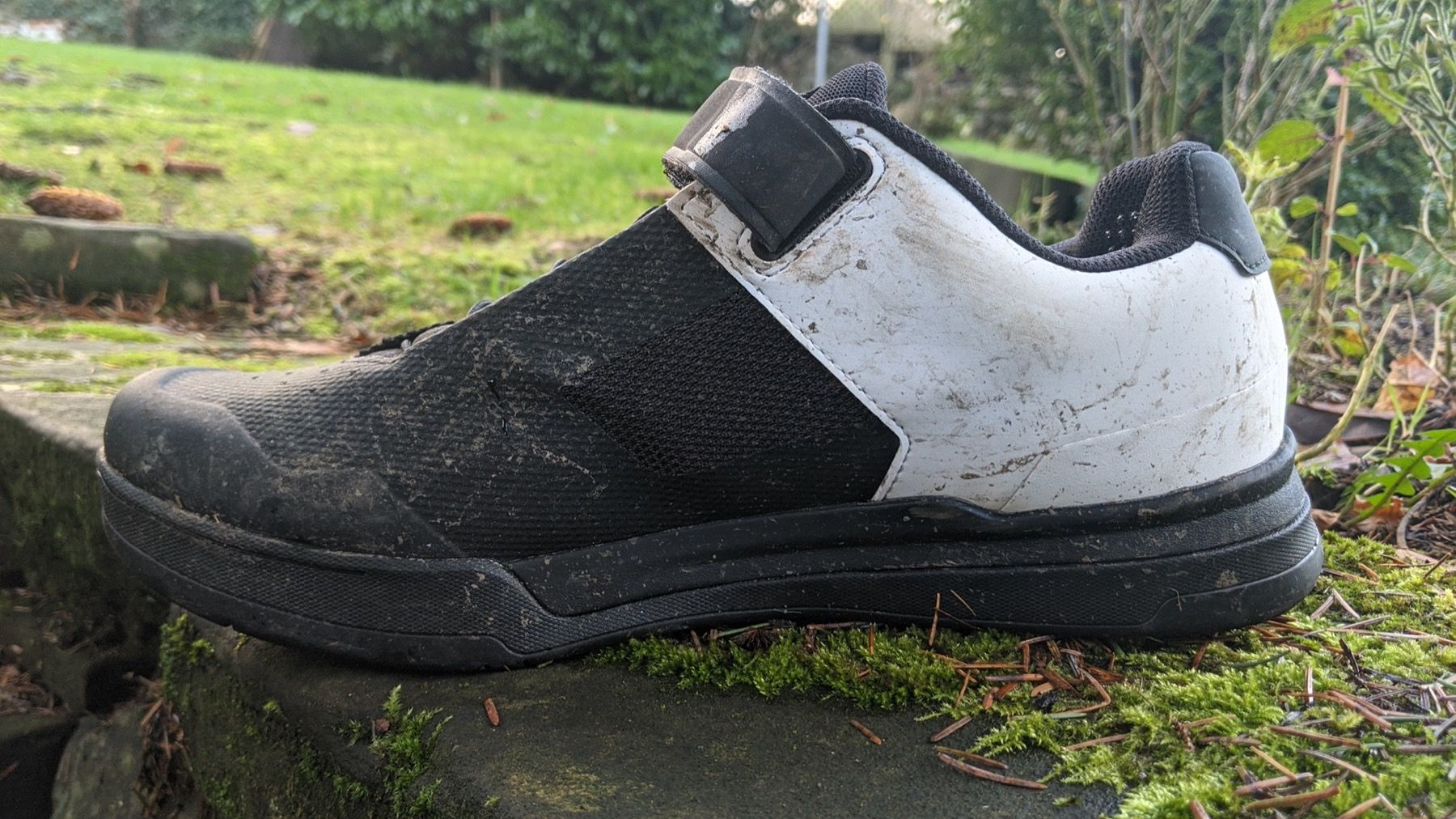
Thankfully these are mostly black in colour so they’ve not gone a weird shade of browny red/blue/yellow/whatever but they do have a white panel on the instep-side of the shoe that looks a bit like something a 1920s Chicago gangster would wear. (It’s not gone a weird shade of brown yet either).
The fit is perfect, as in, it seems bang-on for my size 43 feet. My feet aren’t particularly wide or narrow but if I wore thick wooly socks things might feel rather snug. As always, try shoes on before ordering them (by going into a shop!) and maybe go a size up if you routinely wear hiking socks.
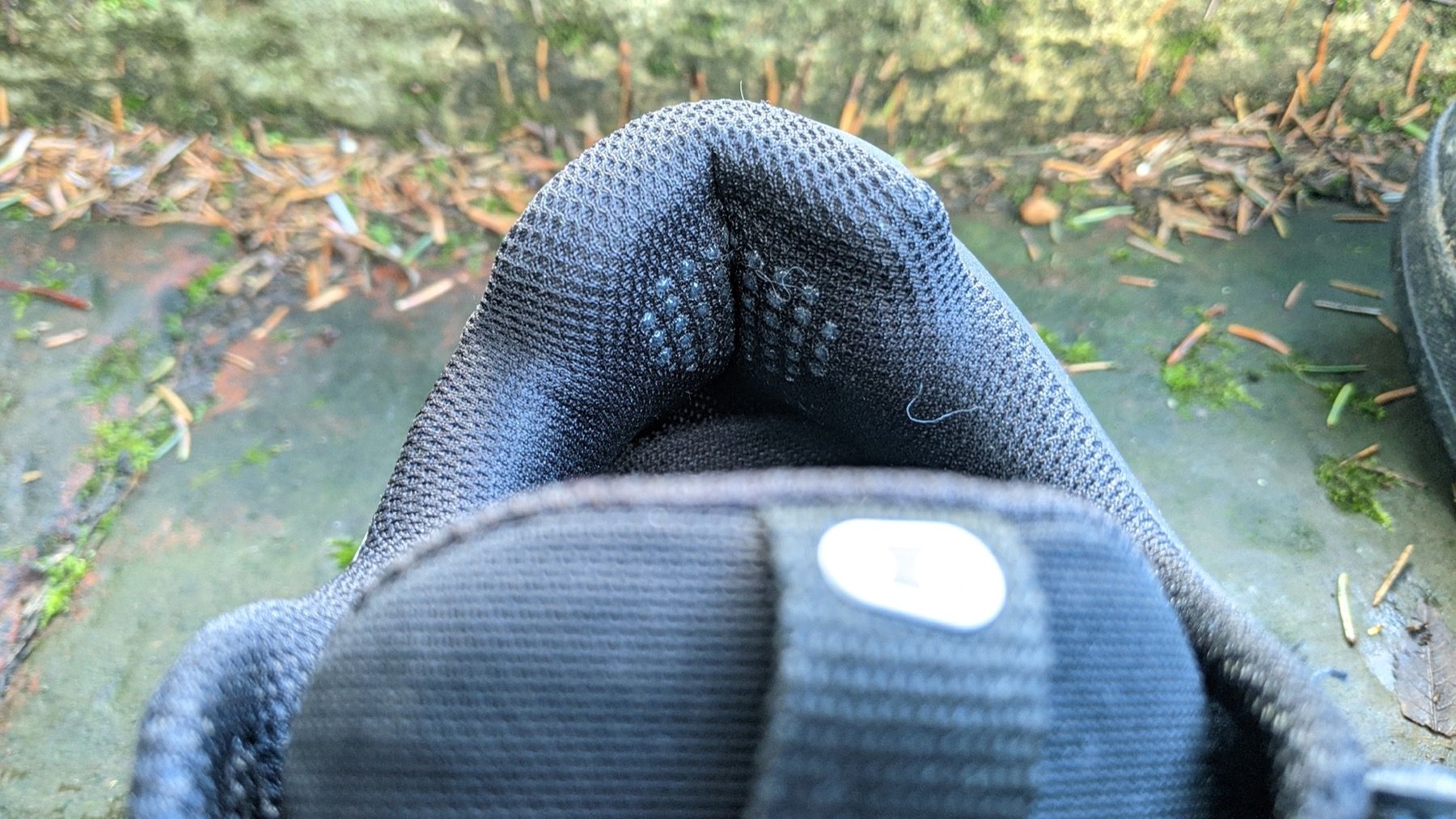
There’s a small panel of silicone dots on the back of the heel which is common in XC race shoes to prevent the shoe moving around, especially when running/trudging up steep slopes. It works well but you need to carefully ‘place’ your heel into the shoe – if you lazily try to squish them in without undoing the laces your sock will get pulled up your ankle.
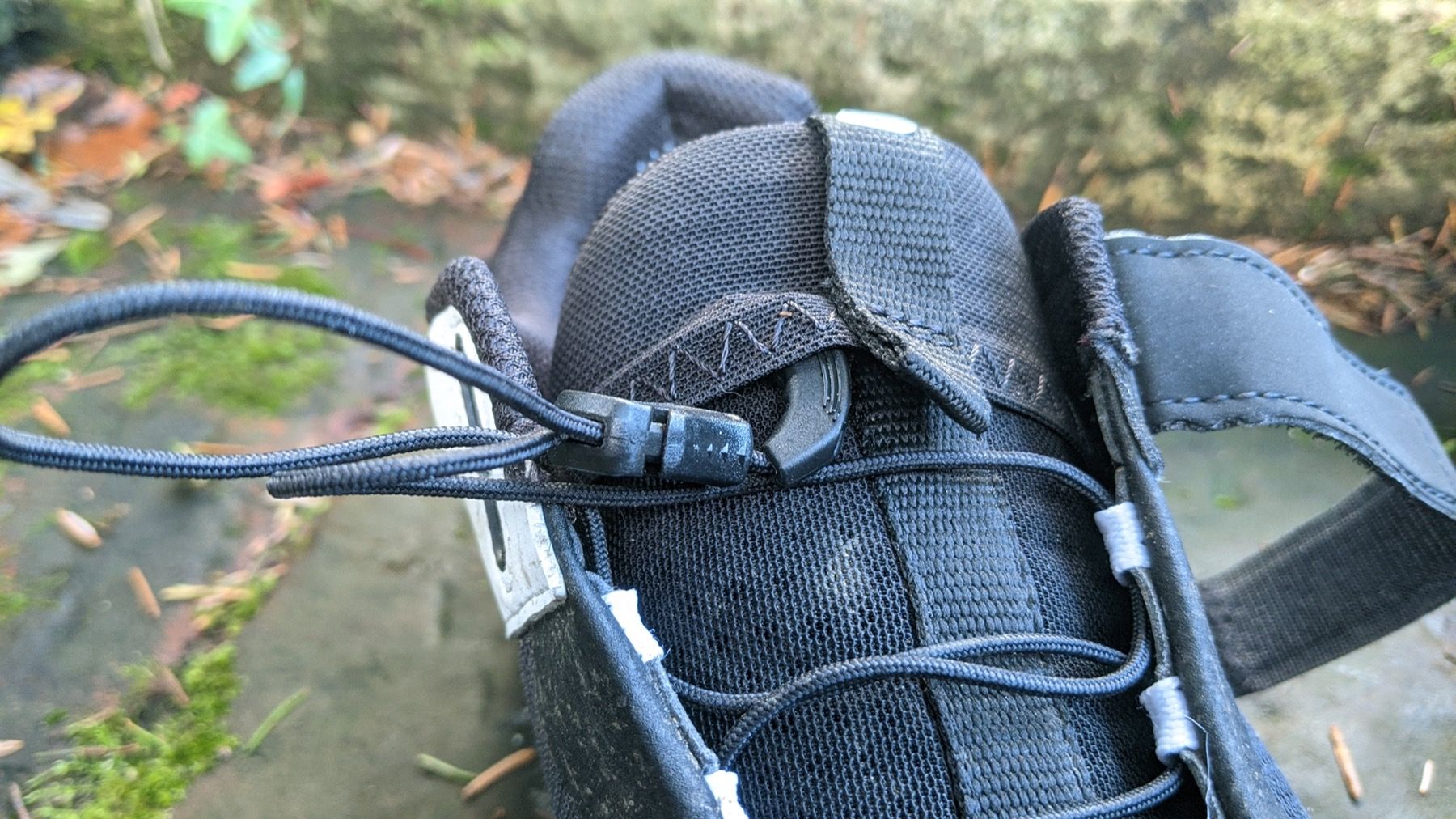
I love the ‘Speedlace’ system, which is more like a running shoe thing and ensures an even tension, much like the BOA dial on the more expensive version of this shoe. If I was going to place a bet on which one was going to last longer and be cheaper to replace/repair, my money is on the laces rather than the fancy dial though (although BOA do offer a free repair kit service).
Clipping in and out of both Shimano and Time pedals is dead easy. I’m not sure it’s any different to any other shoes to be fair, in spite of the ramped cutout bit for the cleat. The range of cleat adjustment is large and there’s a handy ‘Race Zone’’ red line printed on the sole to show you where to place your cleats if you like to get your feet really far forward.
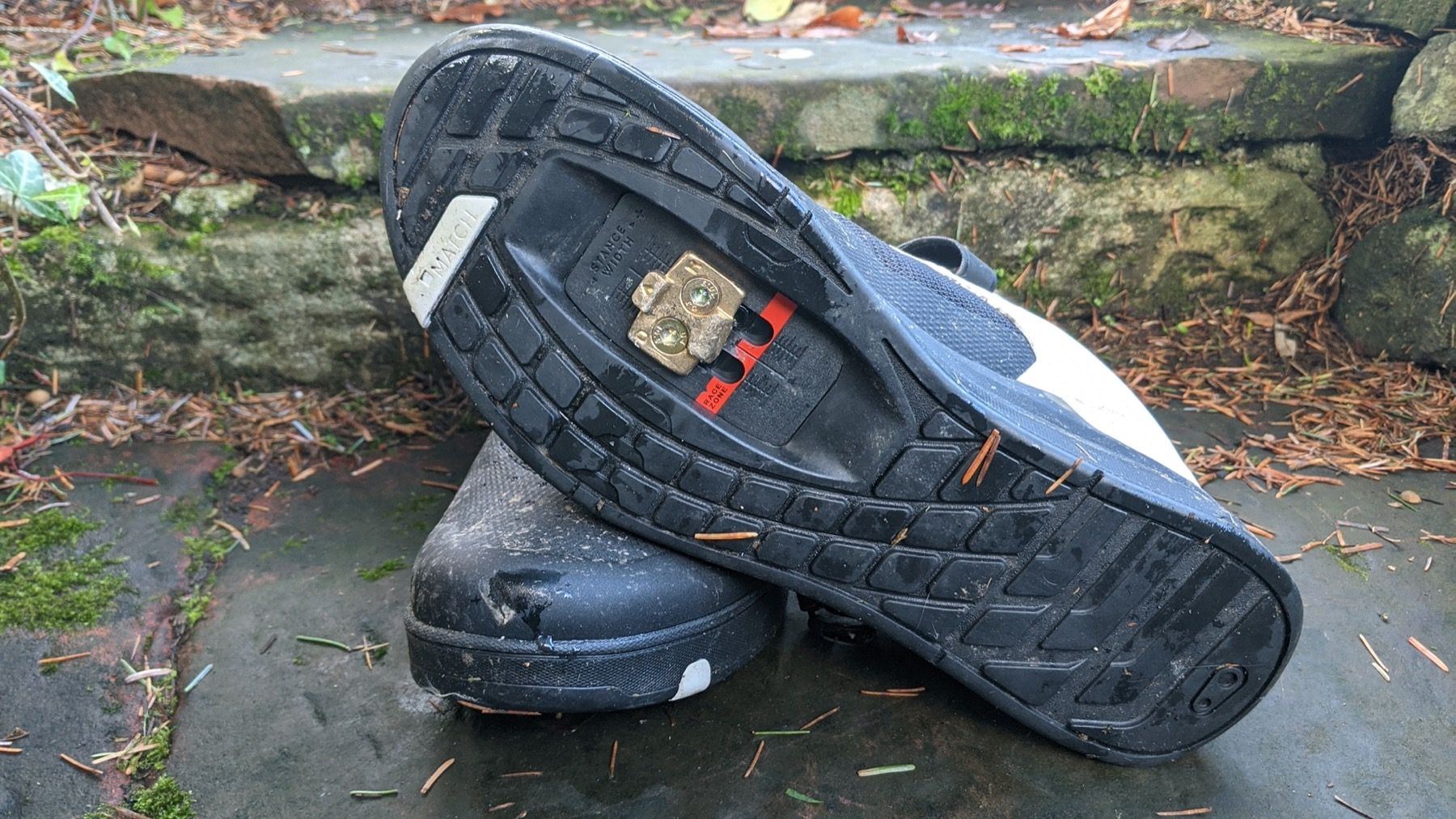
The sole is pretty stiff for a shoe like this – I’m used to XC shoes that are as stiff as planks and while these aren’t that stiff (they definitely feel better clipped to a pedal with a platform rather than one without) I certainly didn’t have any complaints about bendy soles or ‘hotspots’ of discomfort because I could feel the cleat through my feet. Walking around in them is ok – there are some deep channels in the sole, towards the front of the shoe to aid grip in muddy conditions and that seems to do the trick (up to a point).
Crankbrothers Shoes: Flats on The Trail
On then to the flats. With more flats riders in the STW gang, we managed to get a few different perspectives on these shoes.
Me (Hannah) – Stamp BOA
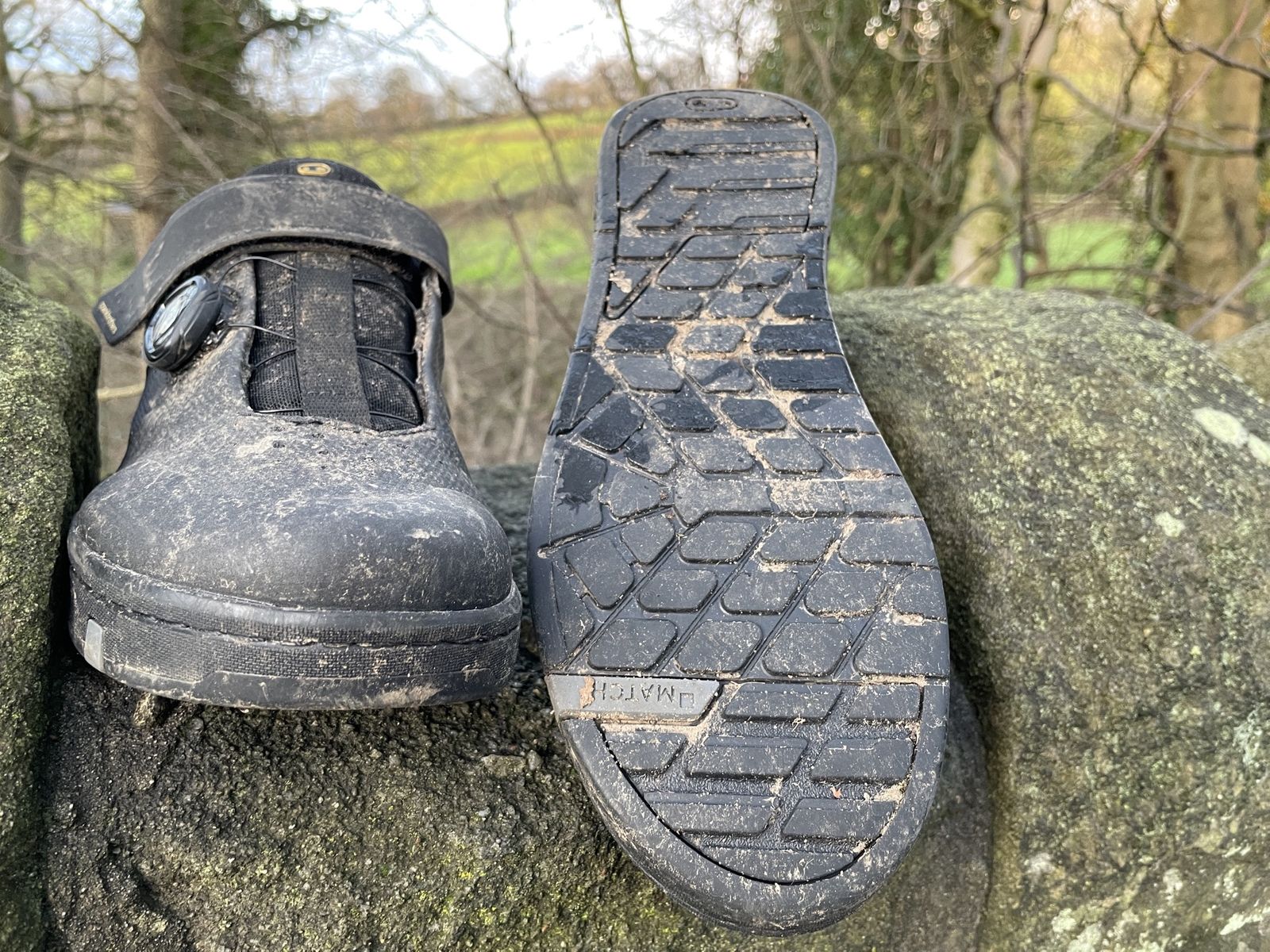
I tried out the top of the pile Stamp BOA shoes. Personally, I rather liked how these looked, and putting them on I was pleased to discover that they’re true to size – as in most cycling shoes, a 41 is the right fit (though I’d usually wear a 40 in a street shoe). They felt comfortable and soft, with no stiff or hard points to pressure my foot. This extended to when pushing up in the woods, when I was pleasantly surprised by how much grip the shoes offered on steep slopes of leaves and loam.
Tightening the BOA, the shoes held my feet comfortably, and I had none of that need to tighten or loosen them once pedalling that I’ve sometimes experienced with BOA closures. The large Velcro strap adds a bit of security and stiffness across the foot – I guess without it the shoe might feel to flexy when pedalling, though it’s hard to tell that it’s doing anything – it doesn’t feel stiff while pedalling. The heel features silicone grippers to prevent slippage, and overall I felt these suited my foot shape well. That’s to say, they seemed nicely snug and fairly narrow at the heel and arch of my foot, but left room for my toes to wriggle.
I like toe-wriggle room as I find it helps to keep the circulation going, which helps with warmth. Warmth is also given a considerable boost by the splash-proofing of these shoes. Usually at this time of year I’d be wearing waterproof socks, but I found that these were snug enough that I didn’t want to squeeze them in. However, even in standard socks I could come back from a muddy ride with dry toes – ankles of course get wet where the water comes in the tops. They’re no winter boot, but they’re certainly less summery than many other shoes I own.
As a consequence of their splash proofing, I never got these shoes totally soaked through, but the fact that they’re quite padded and spongey along with the glued-in insoles makes me wonder how long they might take to dry.
The size 41 is recommended to be paired up with the small crankbrothers flat pedals. I’ve always previously sized up with crankbrothers flat pedals, preferring a larger platform, so for my first ride I set out to test the shoes with their large Stamp 1 pedal. These are not the grippiest of pedals in the first place, but the shoes and large Stamp 1s seemed to be to be an unhappy marriage. There was a definite dead spot in grip, and I found my feet detaching from the pedals too often for comfort on familiar trails. A marriage with DMR Vaults was a happier one, as was a swap to small crankbrothers Stamp 3 pedals. All were in the ‘attached, but not wedded for life’ category though, and on upstrokes or rougher bumps I found my feet detaching from the pedals a little. A bit of focus on heels down technique certainly helped with this, but on bunny hops I never quite got confident. However, what do I know – Fabio Wibmer would appear to have no such problems.
Vic – Stamp Speedlace
Vic tried out the mid-range speedlace version of the Stamp shoes. Again, she found them to be true to size with plenty of toe space. Vic also liked the little pocket for laces that’s in the top of the tongue – it seems that’s a nice feature that none of us had seen before but that is appreciated. Vic found the shoes very comfortable, and while eventually on a very wet ride there was some water that soaked in around the tongue, on the whole the water repellency was good and her feet didn’t get too cold.
Amanda – Stamp Lace
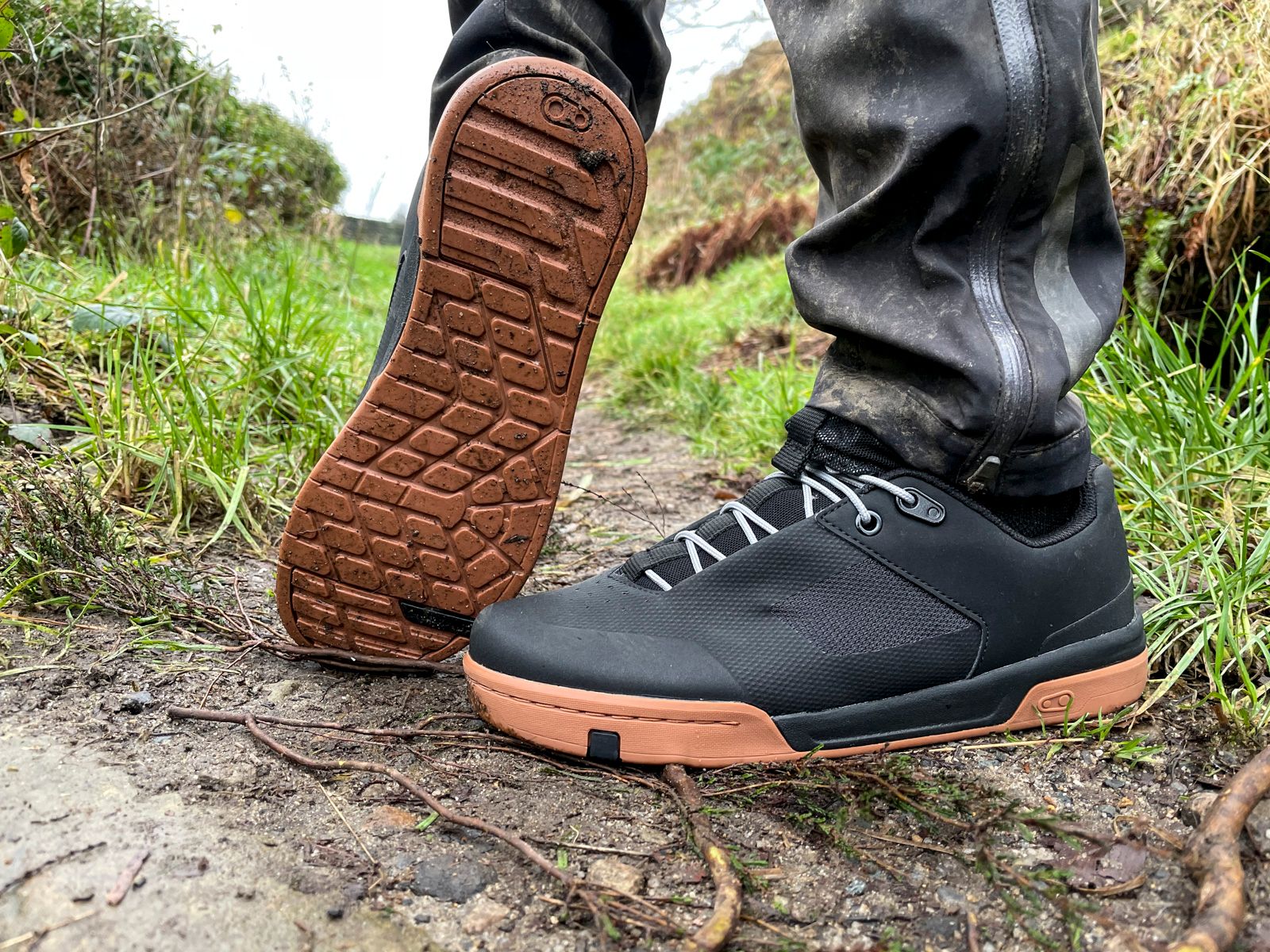
Amanda tested the ‘black and gum’ lace up version of the Stamp shoes, coming in at the lowest price point. Like me, she reckons she has narrow feet, and found them to be a great fit. She also found there was plenty of space for thick waterproof socks too. Also like me, she found the lace up versions to be quite water repellent, basically keeping water out for as long as you don’t let it in the top. However, she did manage to soak them through, and getting them to dry out proved a fairly lengthy process, akin to FiveTens.
Amanda felt her feet were safe and protected from bashes, even in the lace up version, with a nice sturdy feel to the shoes. The laces tucked in really neatly to a little much on the shoe, and as well as keeping them out of your cranks, with the laces tucked away from all the dirt they remained easy to undo at the end of a grim ride. No doubt this will ease the temptation to just slide feet in and out without untying the laces, and help prevent early wear on the heel of the shoe. The smooth external surface on the shoes meant that dirt stayed on the outside and brushed off quite easily when dry – another feature which should help make the shoes last.
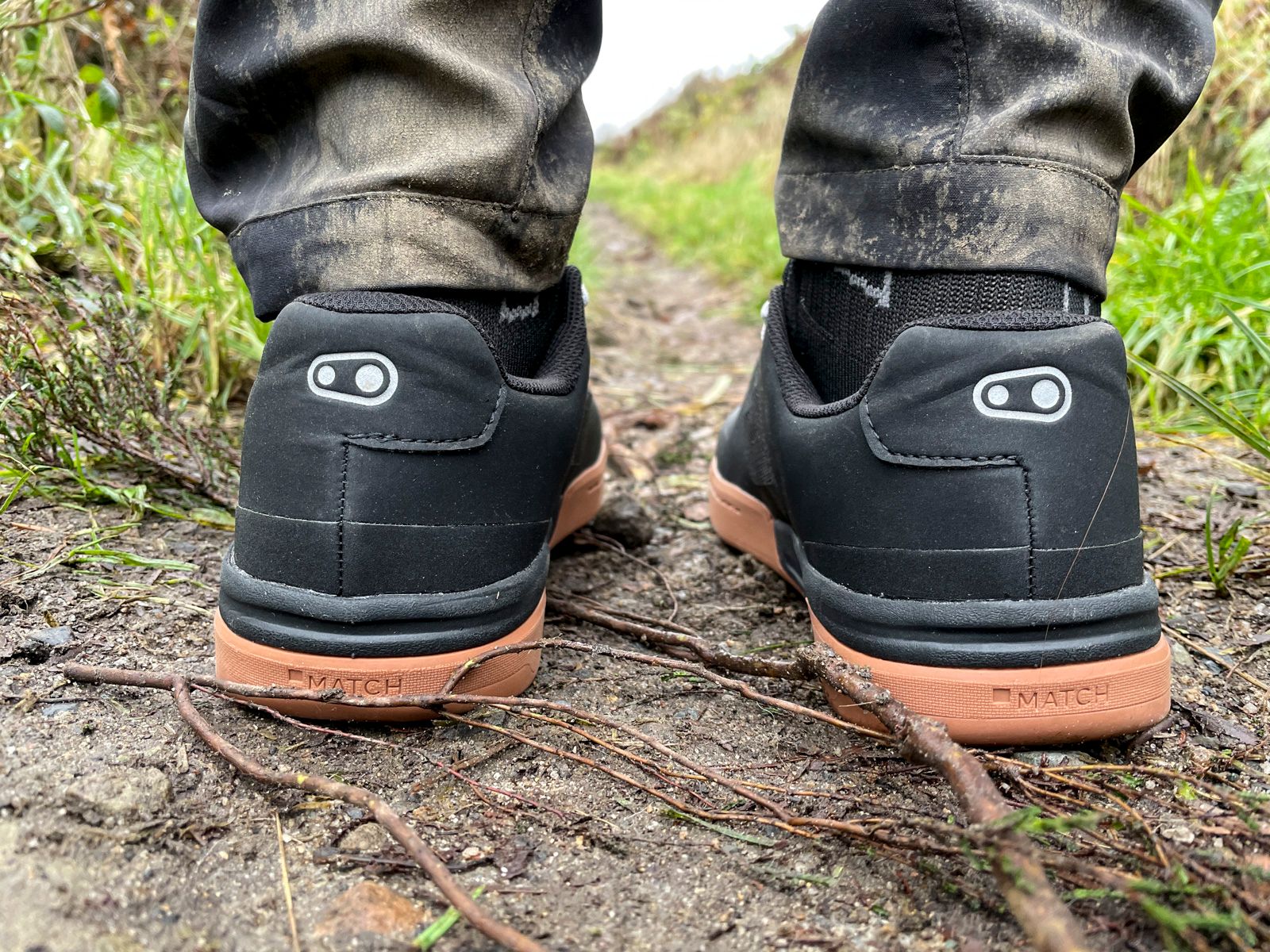
Unlike me, Amanda found walking on wet ground felt a little risky, and that she was slipping a lot. That said, she’s been riding in the Adidas Trail Cross Mid shoes immediately before this test, and they’re specifically designed for walking around in as well as riding (like when trail building) so perhaps the contrast in shoes soles is more stark than for me, used to flatter and slippier things.
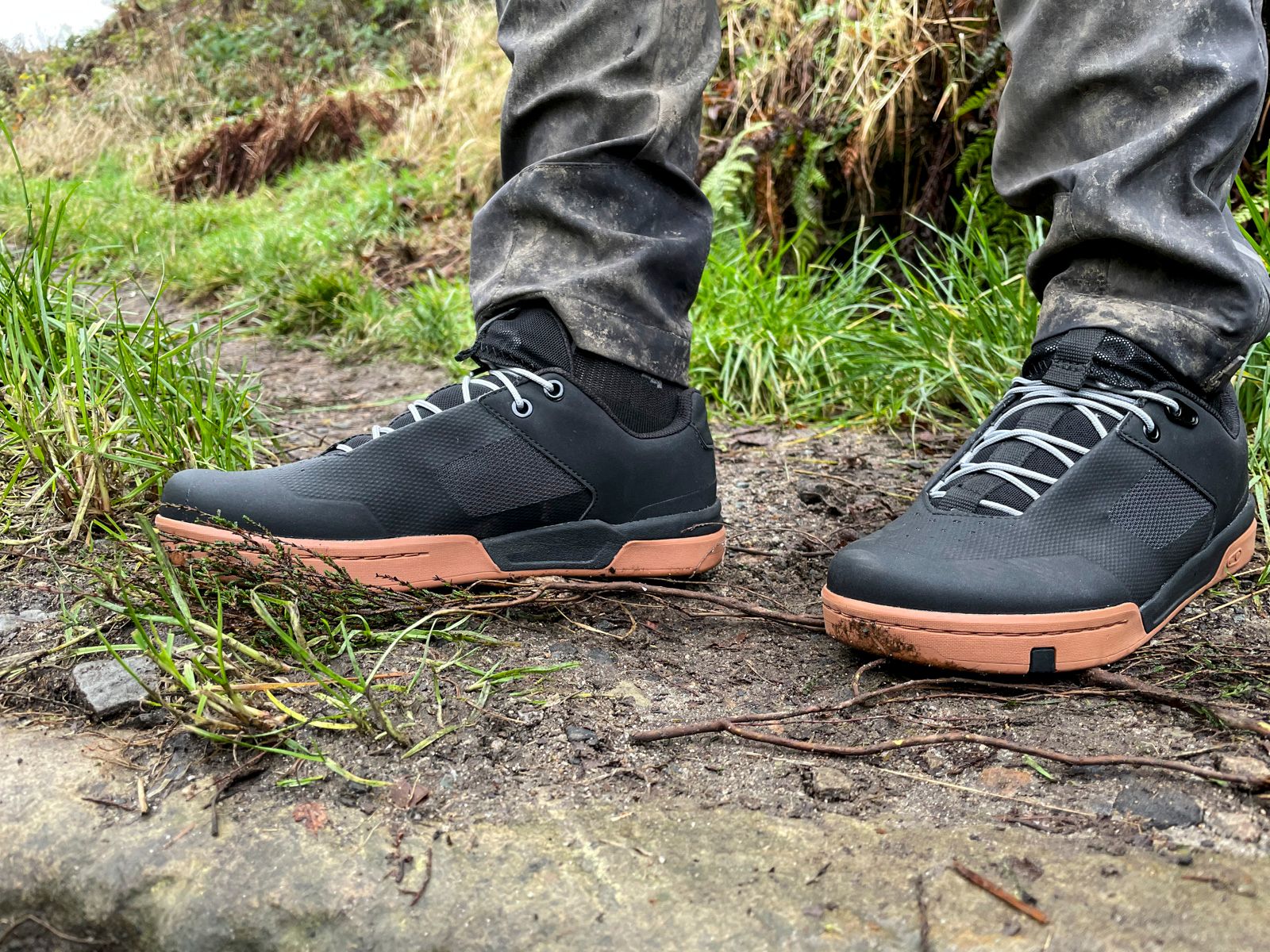
On the pedals, Amanda found the best match was with Nukeproof Horizon Sam Hill Pro pedals. Here she found them very sticky, rode hard and didn’t feel like her feet would blow off the pedals even in the wet testing conditions. On Nukeproof Composite pedals, she found them acceptable, but wasn’t hugely confident that she was stuck to the pedals, while on DMR V12 she had a fairly unhappy ride, feeling like the combination wasn’t as grippy as she would like.
Compare and contrast
With a few of us trying out these flat pedal shoes, and coming from backgrounds of various shoe and pedal combinations, we’ve all got slightly different takes on how these feel and when we might wear them. Personally, with the right pedal combination, I find they have a similar level of stiffness and grippiness to my Ion Scrub Amp shoes, though the apparent sensitivity to shoe/pedal mating is a little frustrating for someone who never quite knows which pedals might be on the bike I ride next. They are warmer than my Ions though, and I found them more confident to walk in. I don’t find them as stiff, sticky or slippery off the bike as my FiveTen Freerider Pros, and they’re better at shrugging off the splashes.
Amanda says: I love the way they look, I have the lowest spec (just laces, no BOA or Velcro) and in summer I can see myself wearing these daily. A bit like the FiveTen Sleuths for being ‘trendy’, yet much stiffer so I’m happier riding in these.
Vic says: I tried the shoes out with the new DMR V11 pedals, having previously been riding in Specialized 2FOs – my impression is that they’re not quite so sticky in this combination, but that they are very comfortable.
Overall – Crankbrothers Shoe Range
Flat pedal fans will be waiting for the comparison with FiveTen rubber, and we’d have to say they’re not so sticky as them. However, if you’re looking for a different fit, style, or feel, then these will be worth a look, particularly if you run longer pinned pedals, to which these seemed to stick more strongly.
The clip in crew will find a comfortable and fairly weather resistant shoe that isn’t so flexible as to make climbing too dreary, while remaining good enough to walk around in. The clip-in-and-out-ability isn’t any better or worse than any other shoe but the huge sole cutout around the cleat might save some people who prefer their cleats really far back from having to get the Stanley knife out.





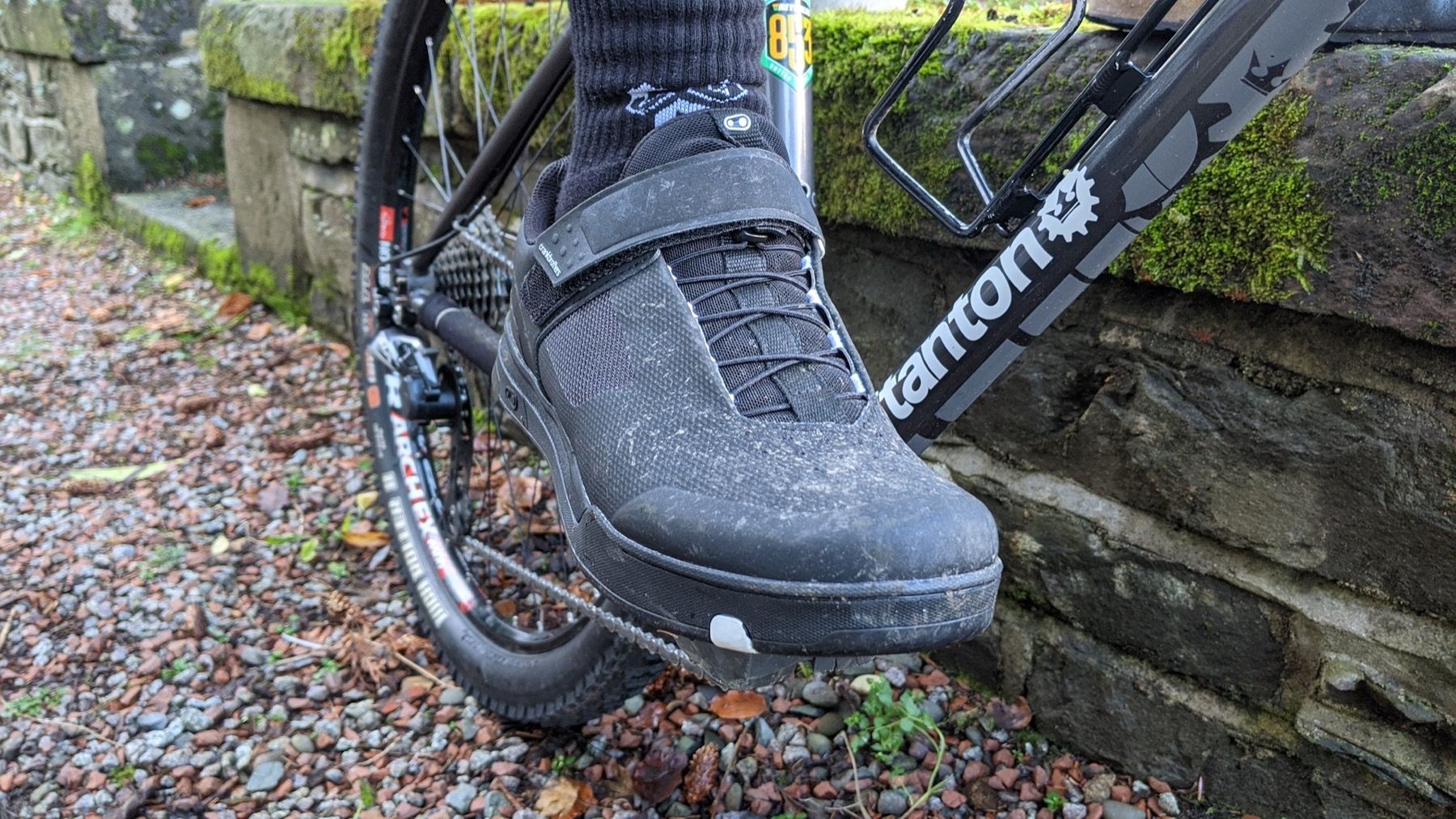
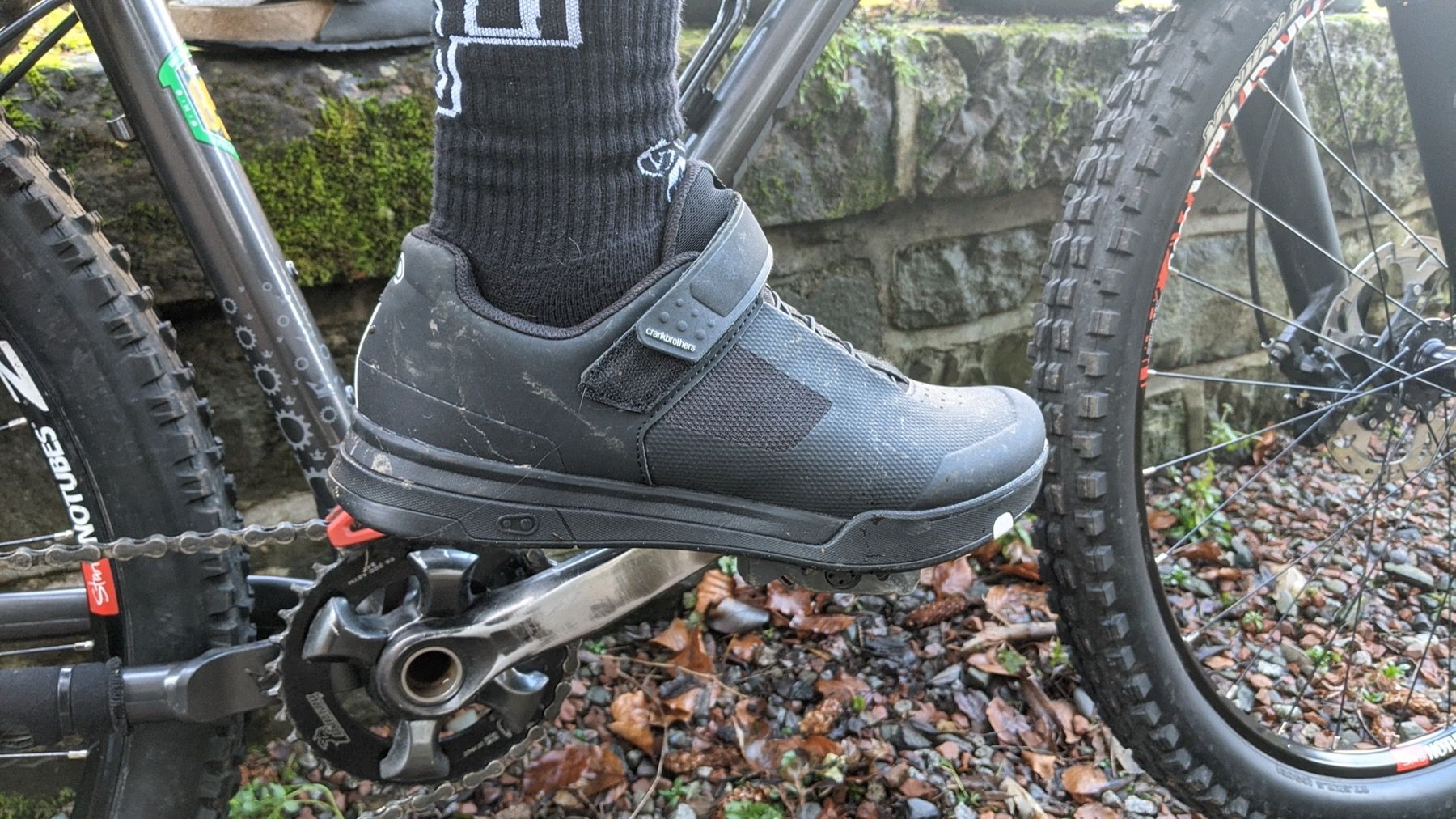
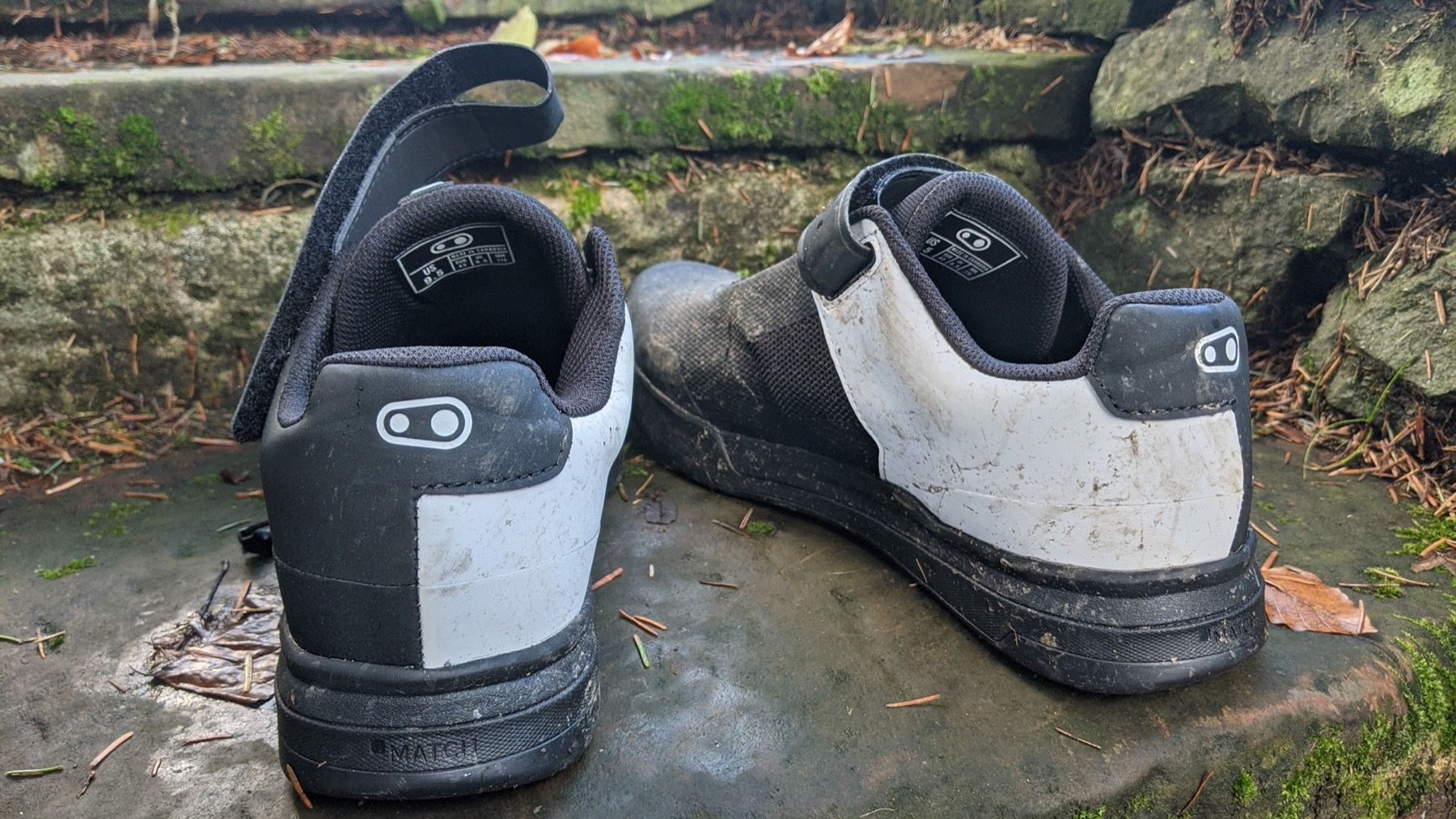
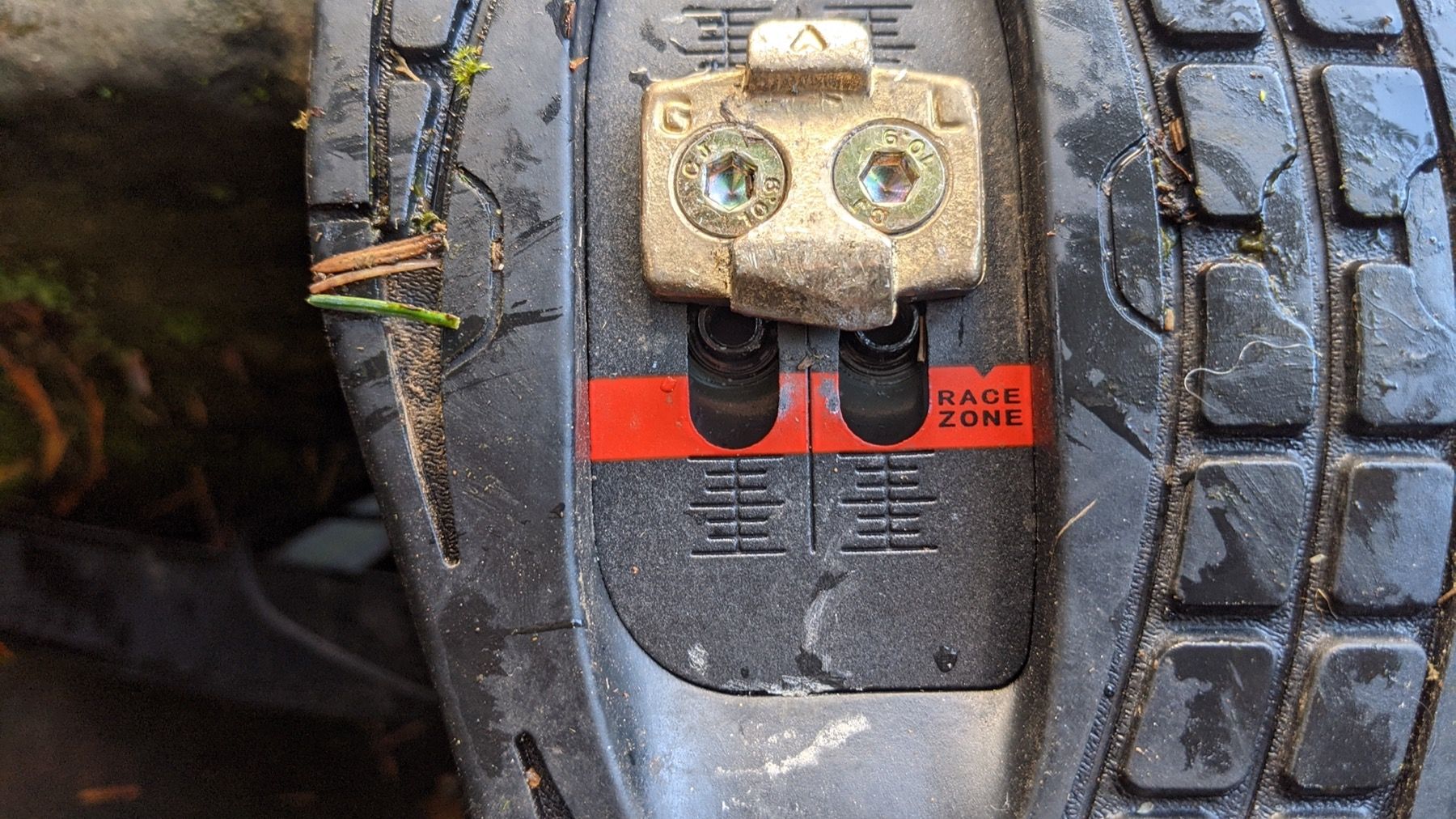
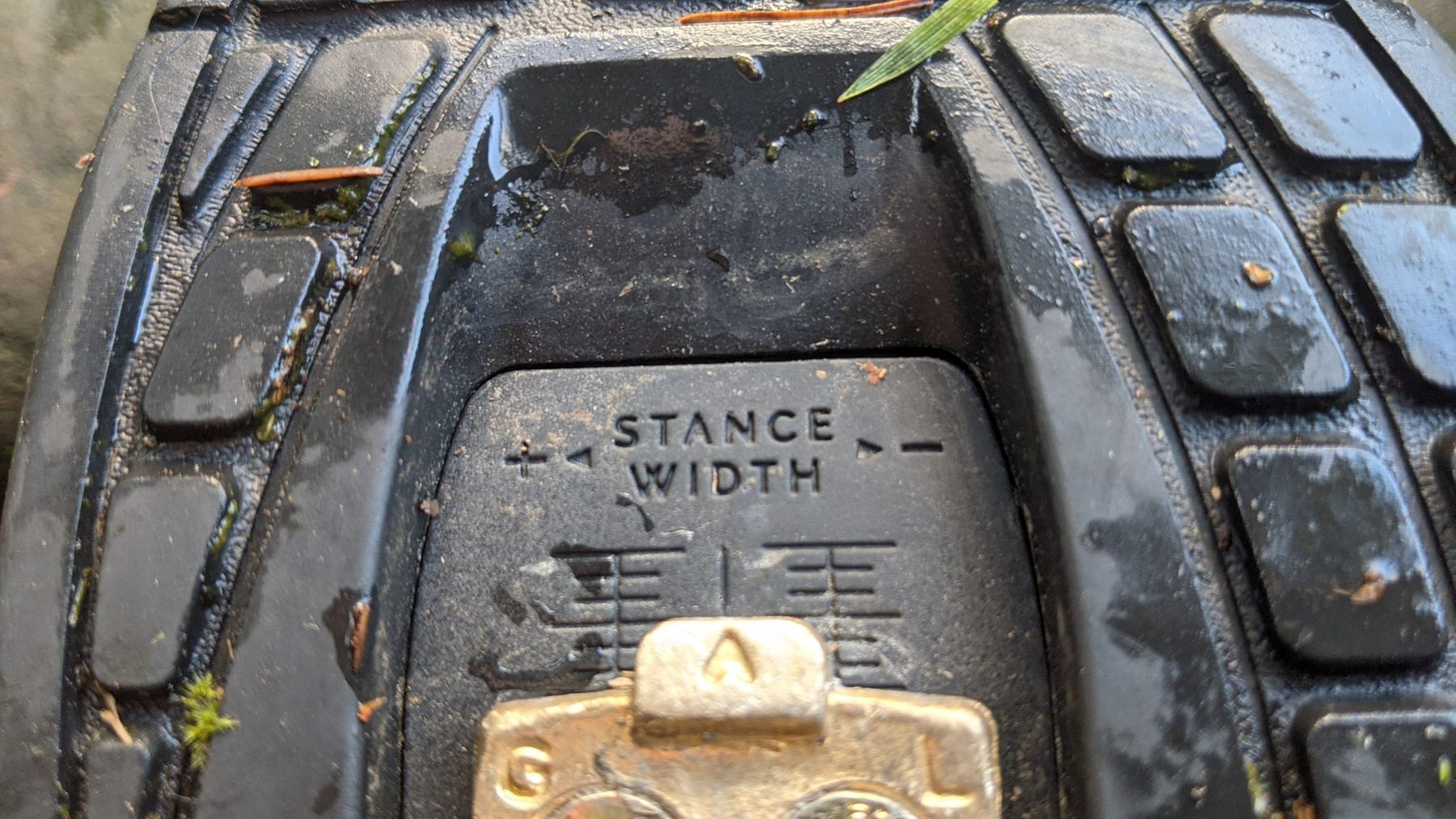
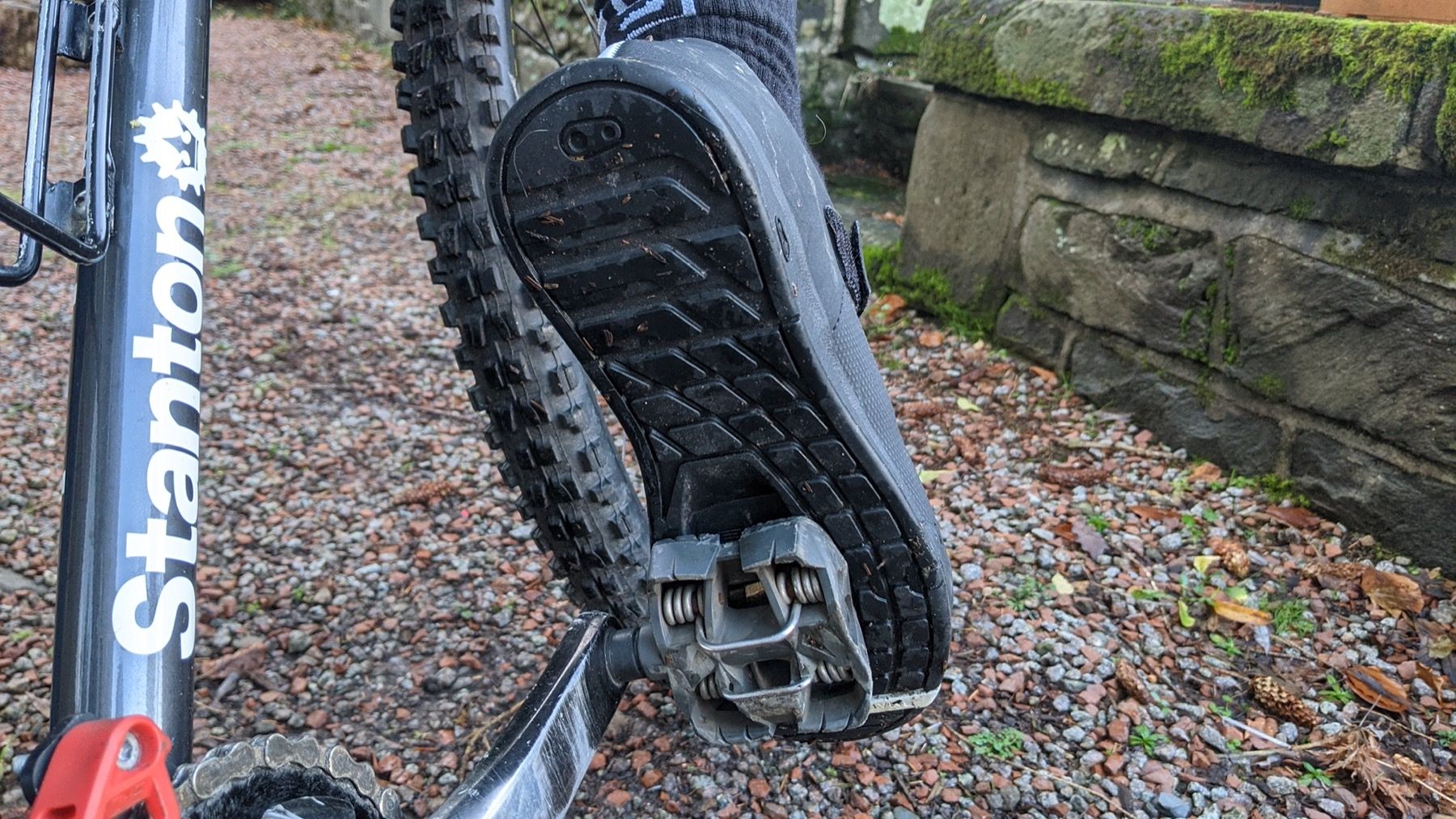
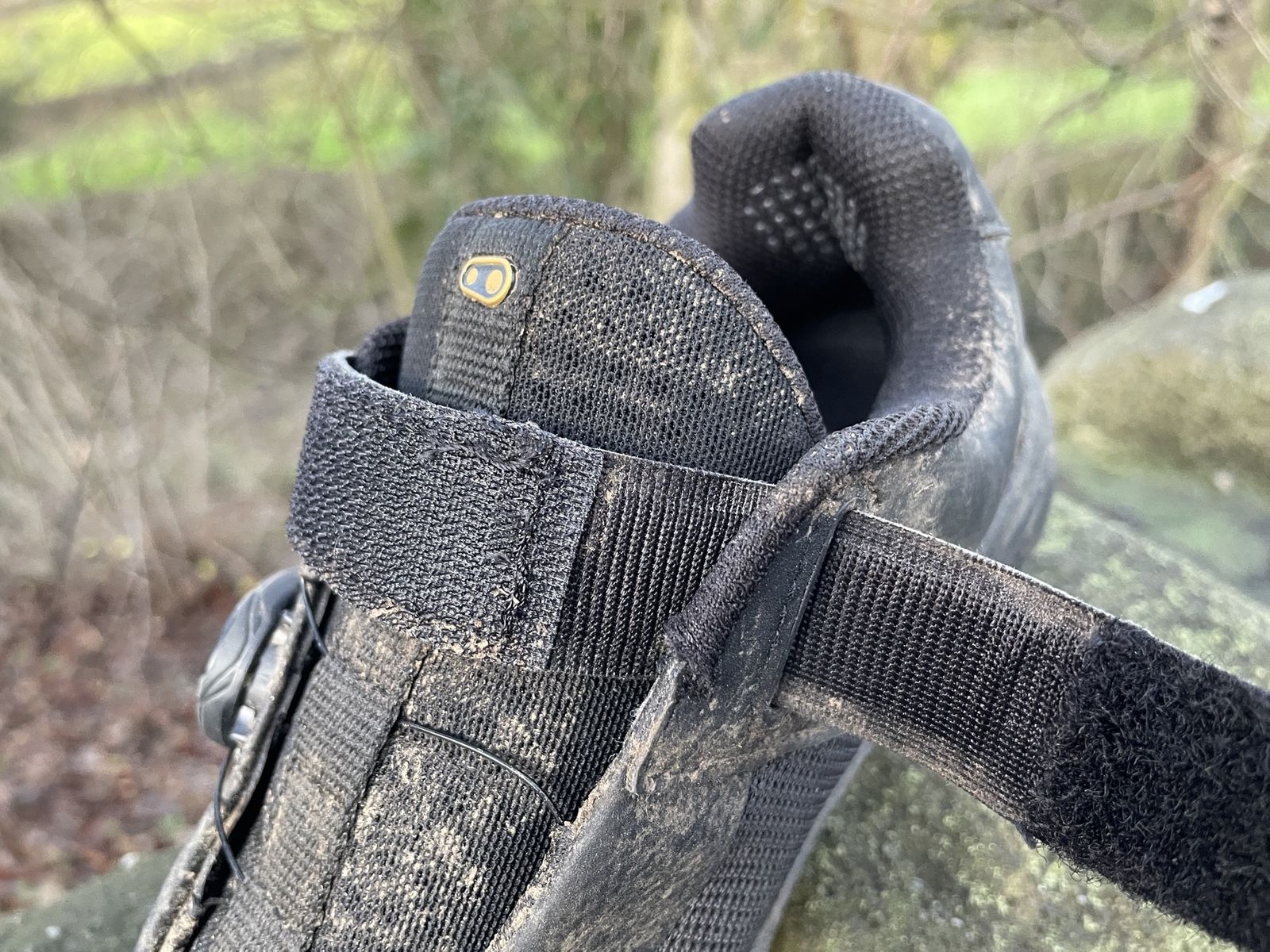
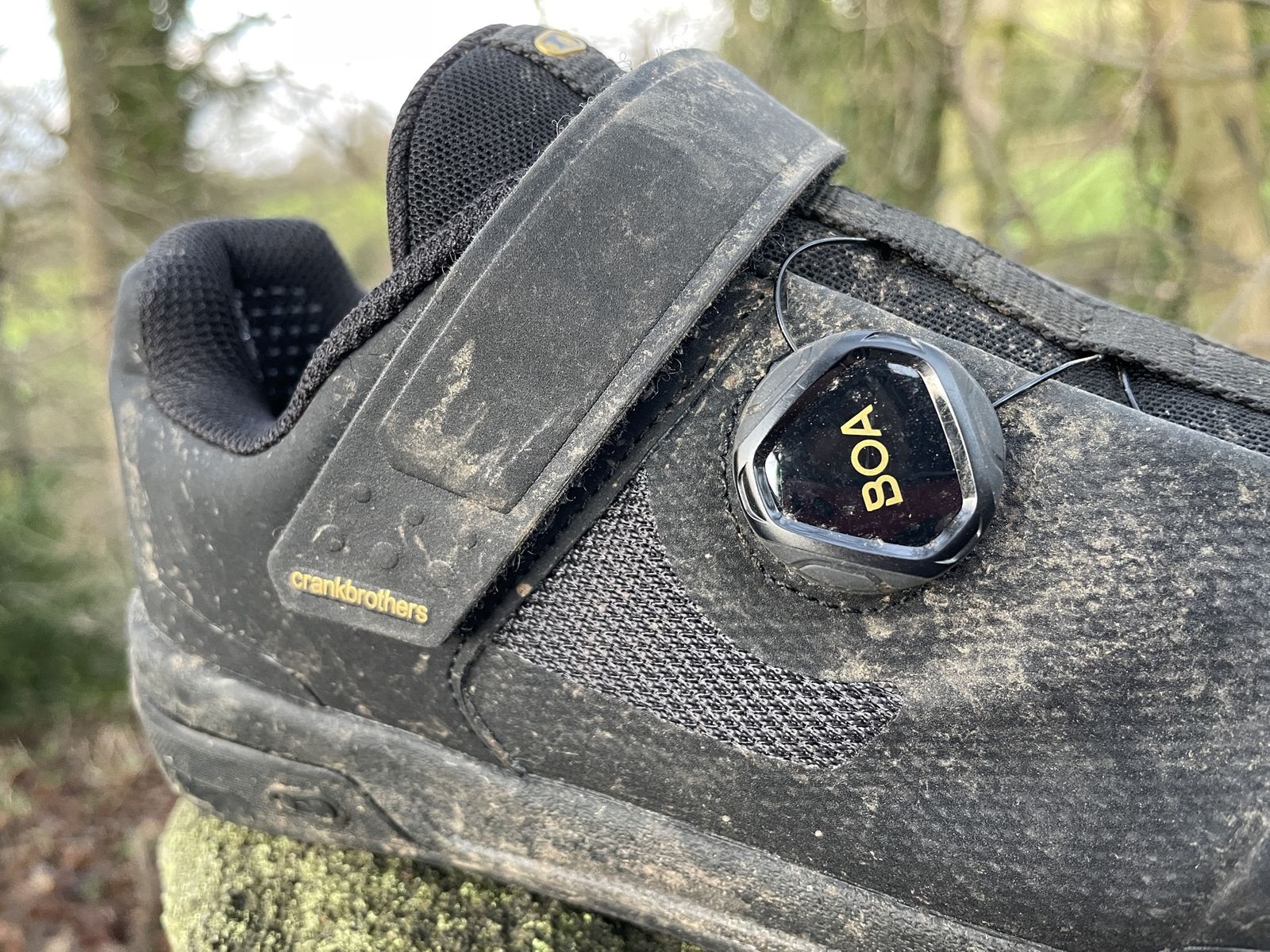
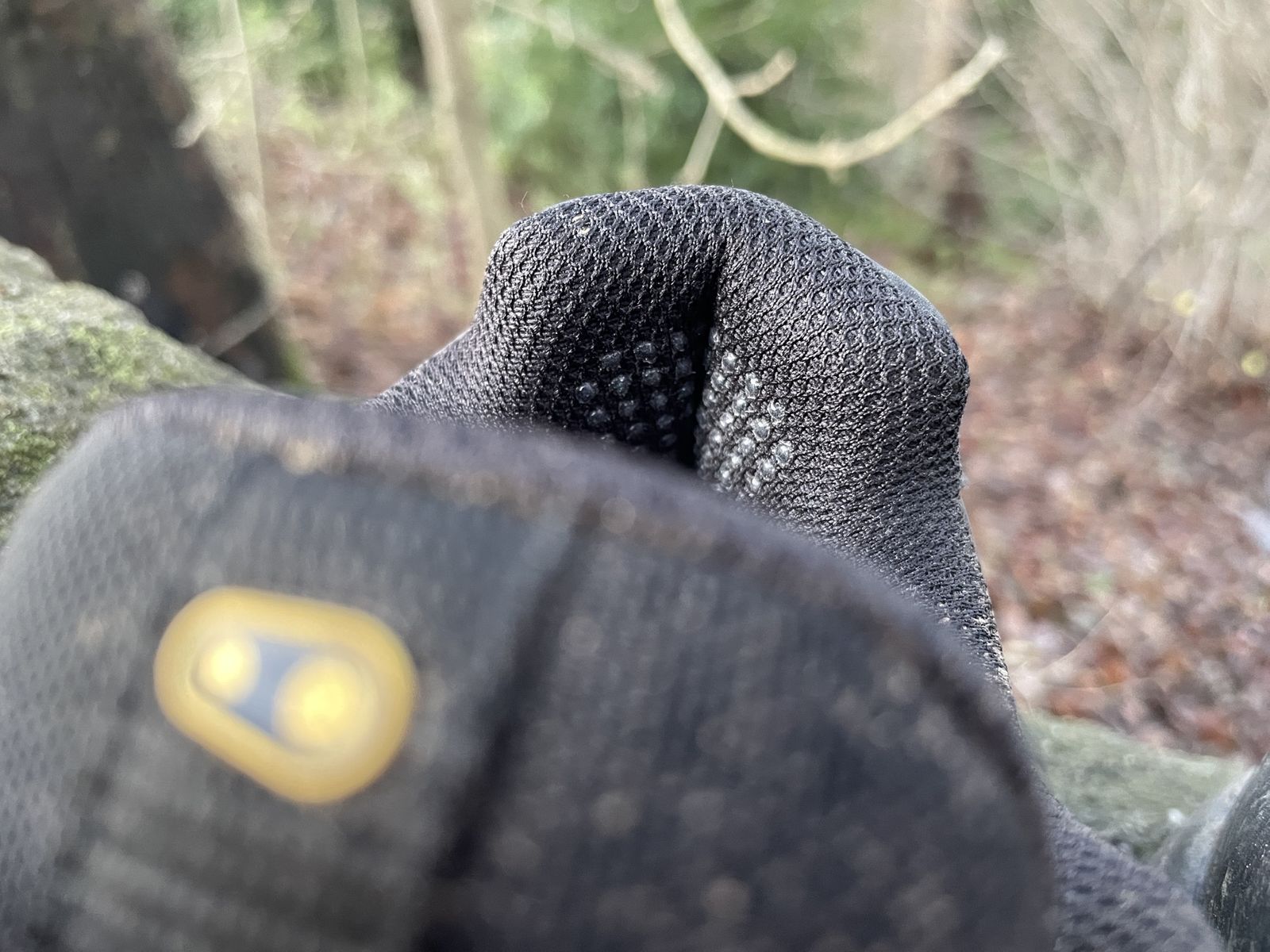
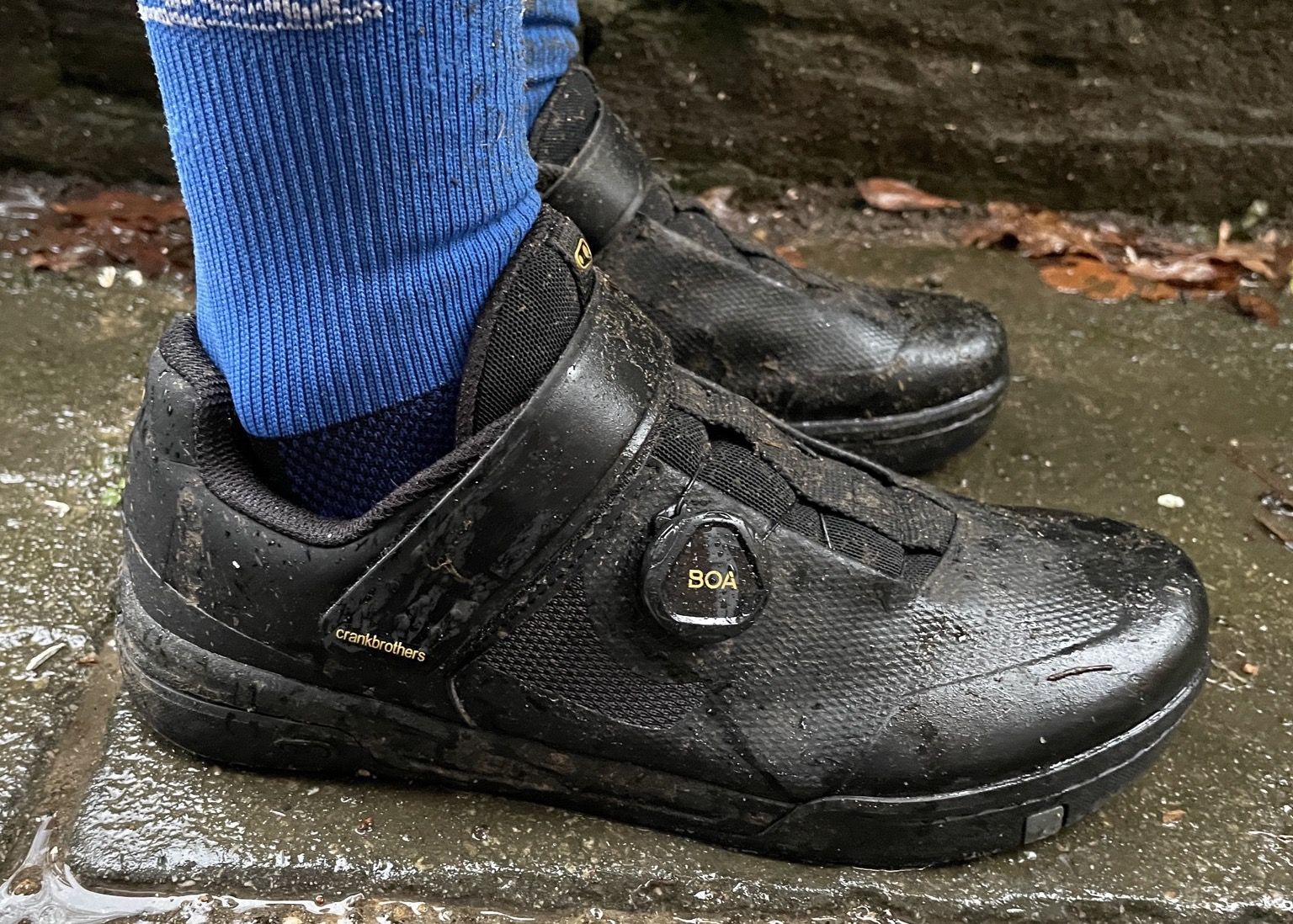
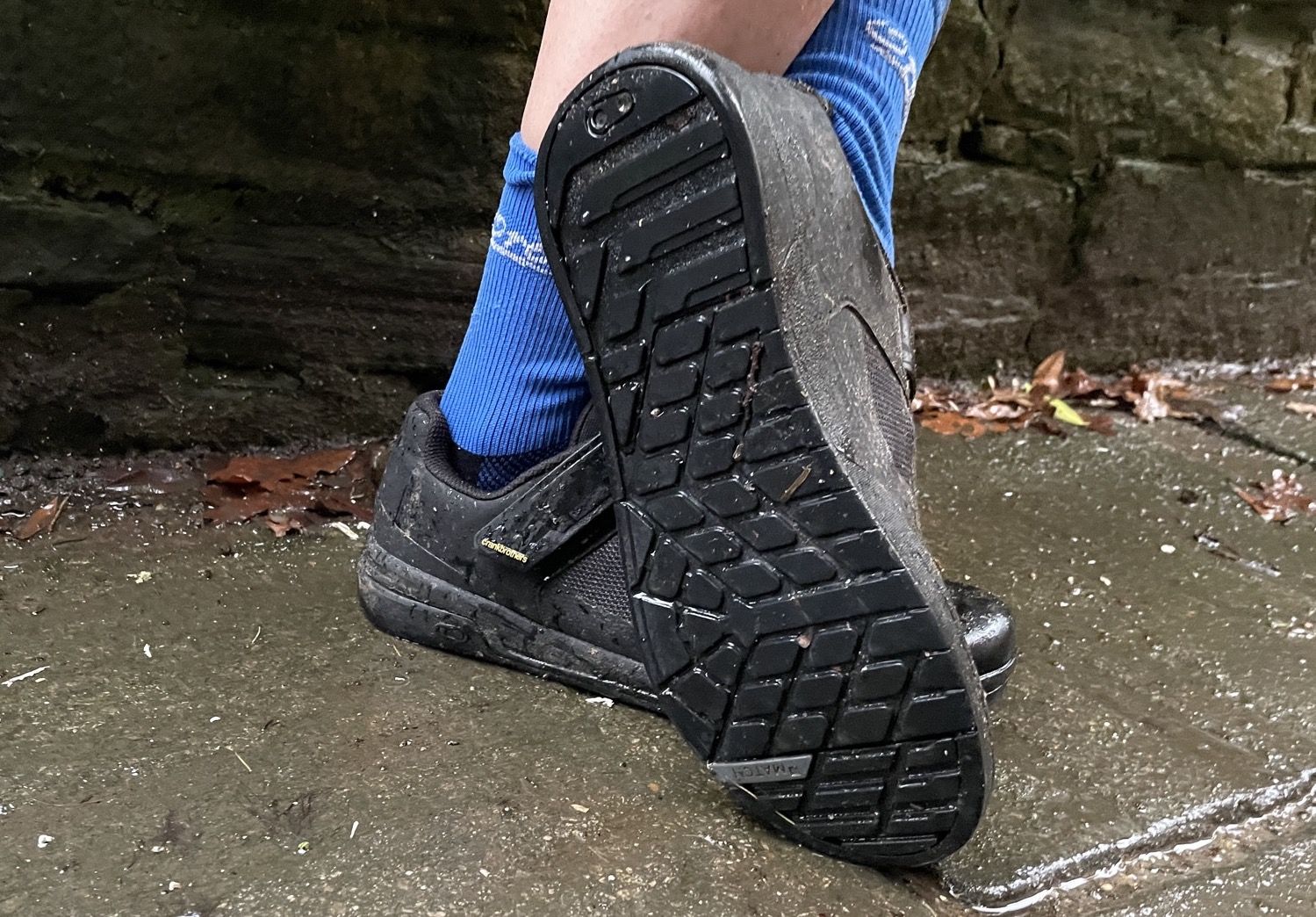
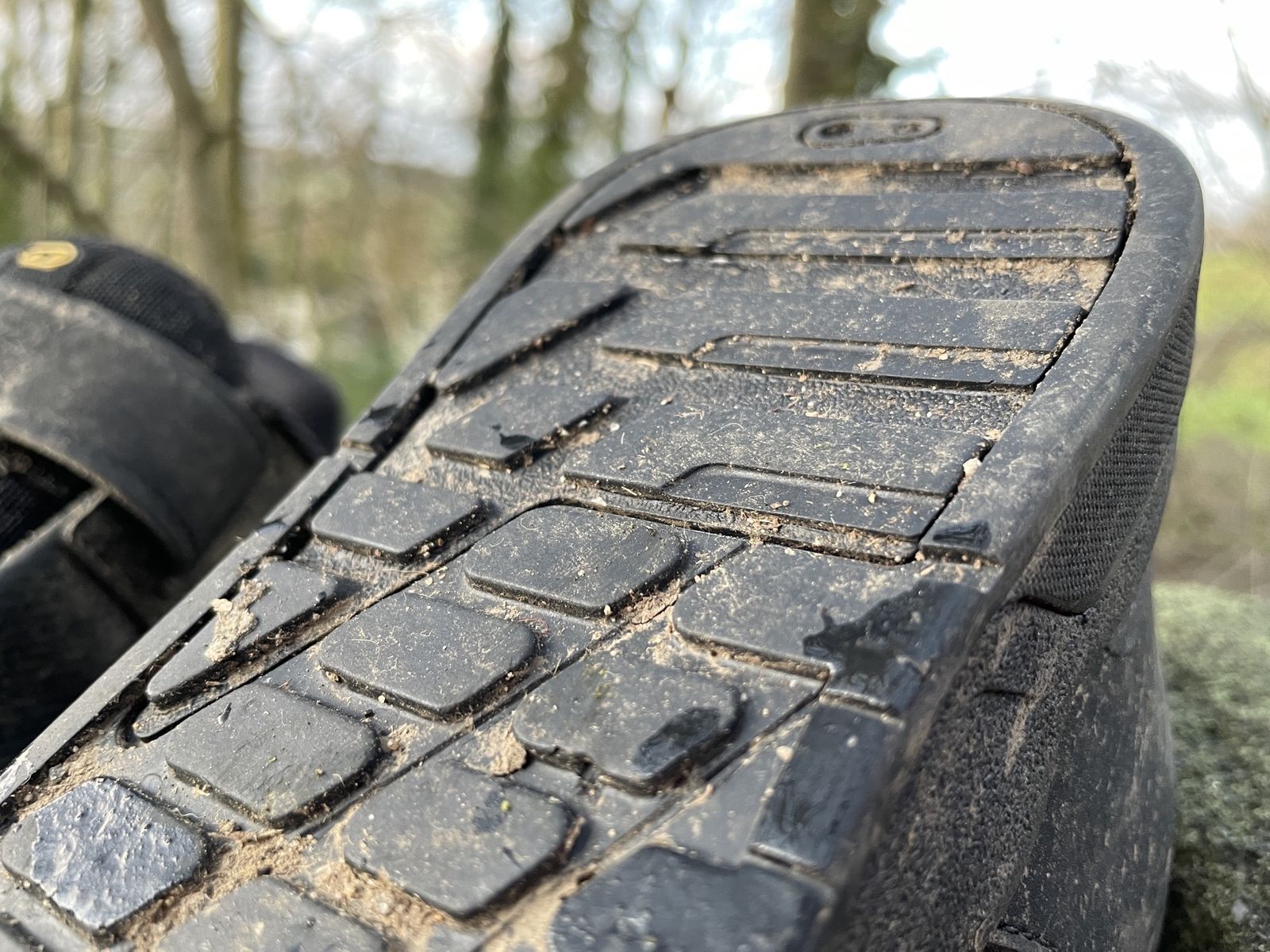
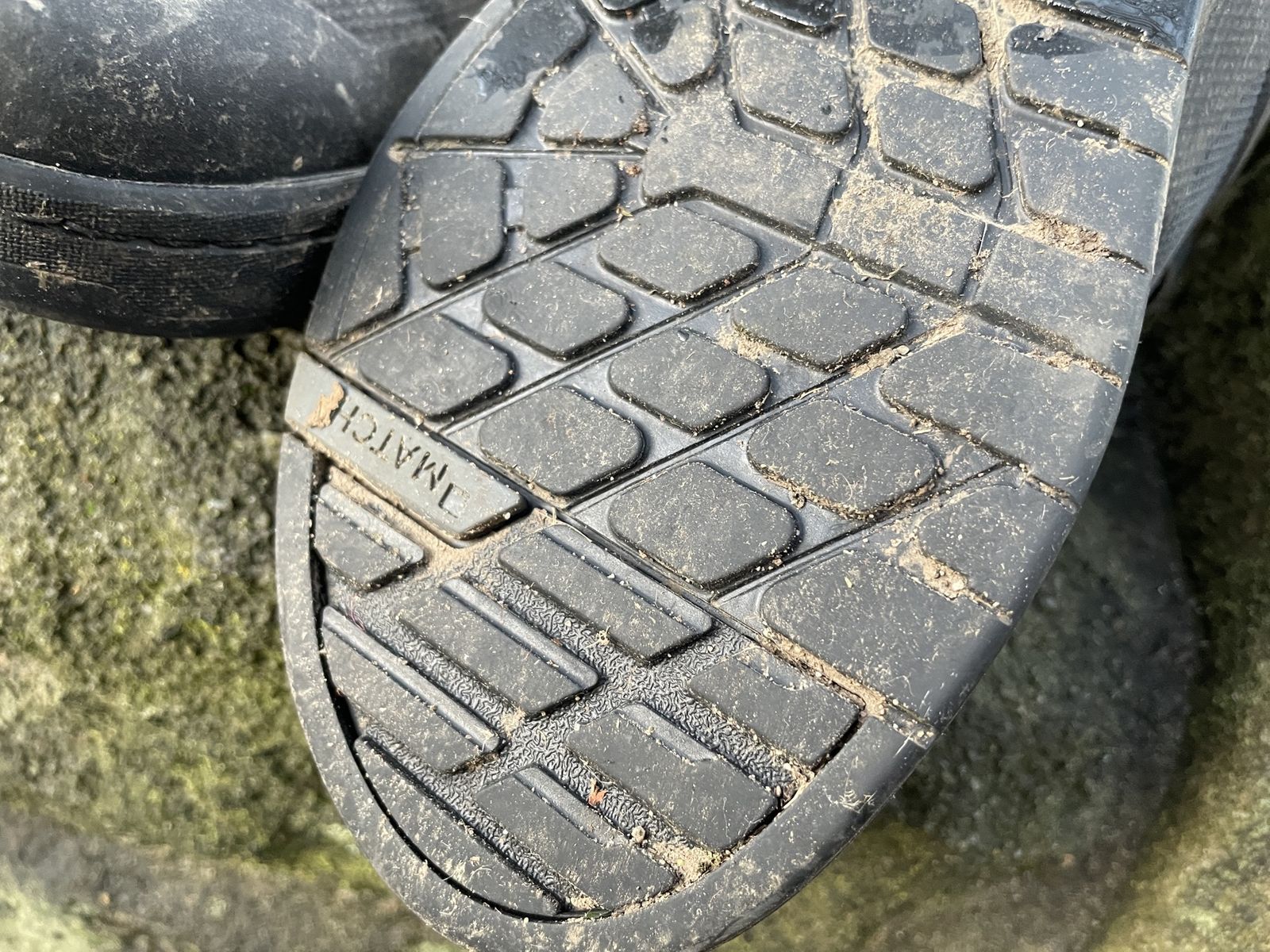

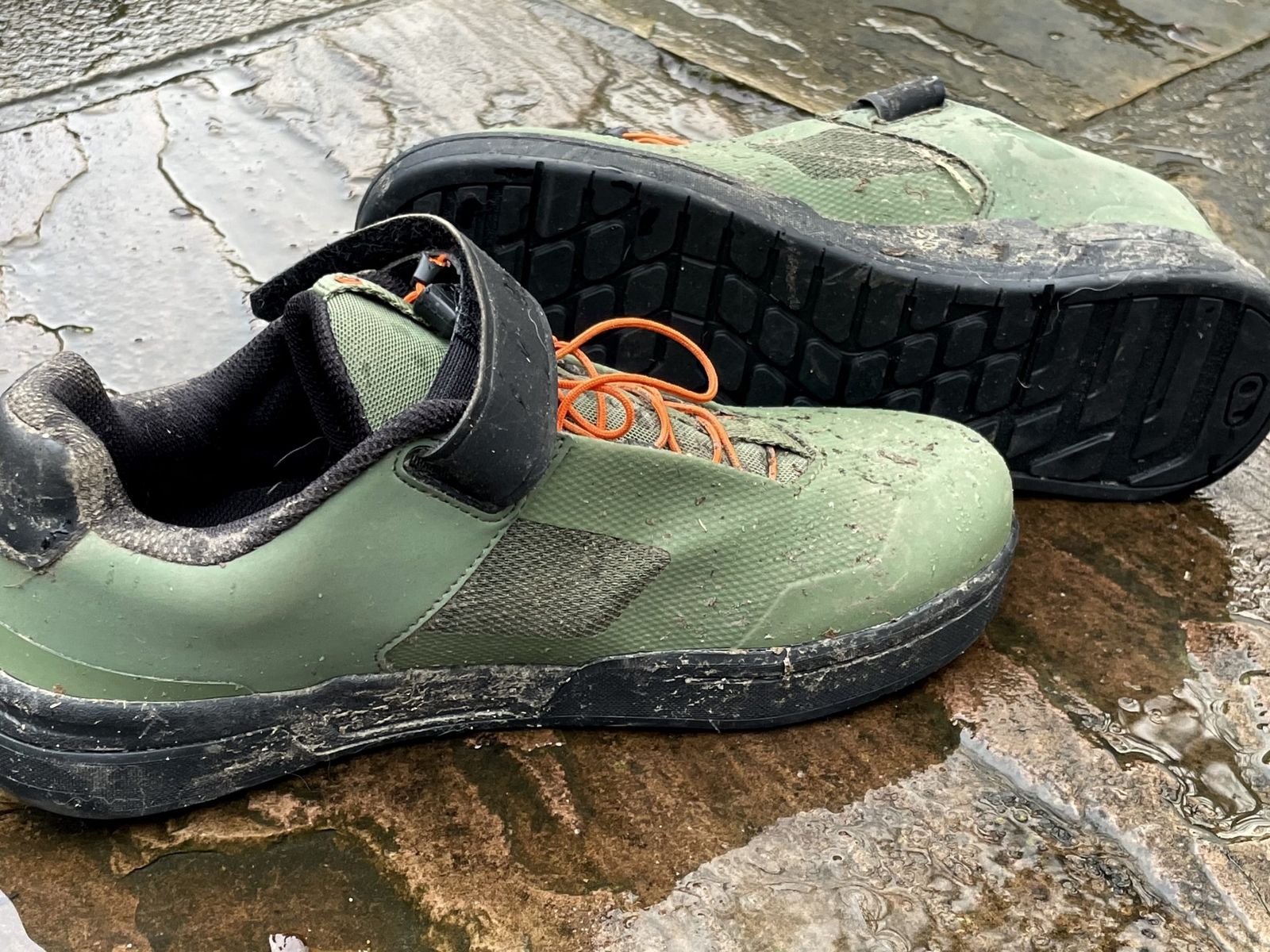
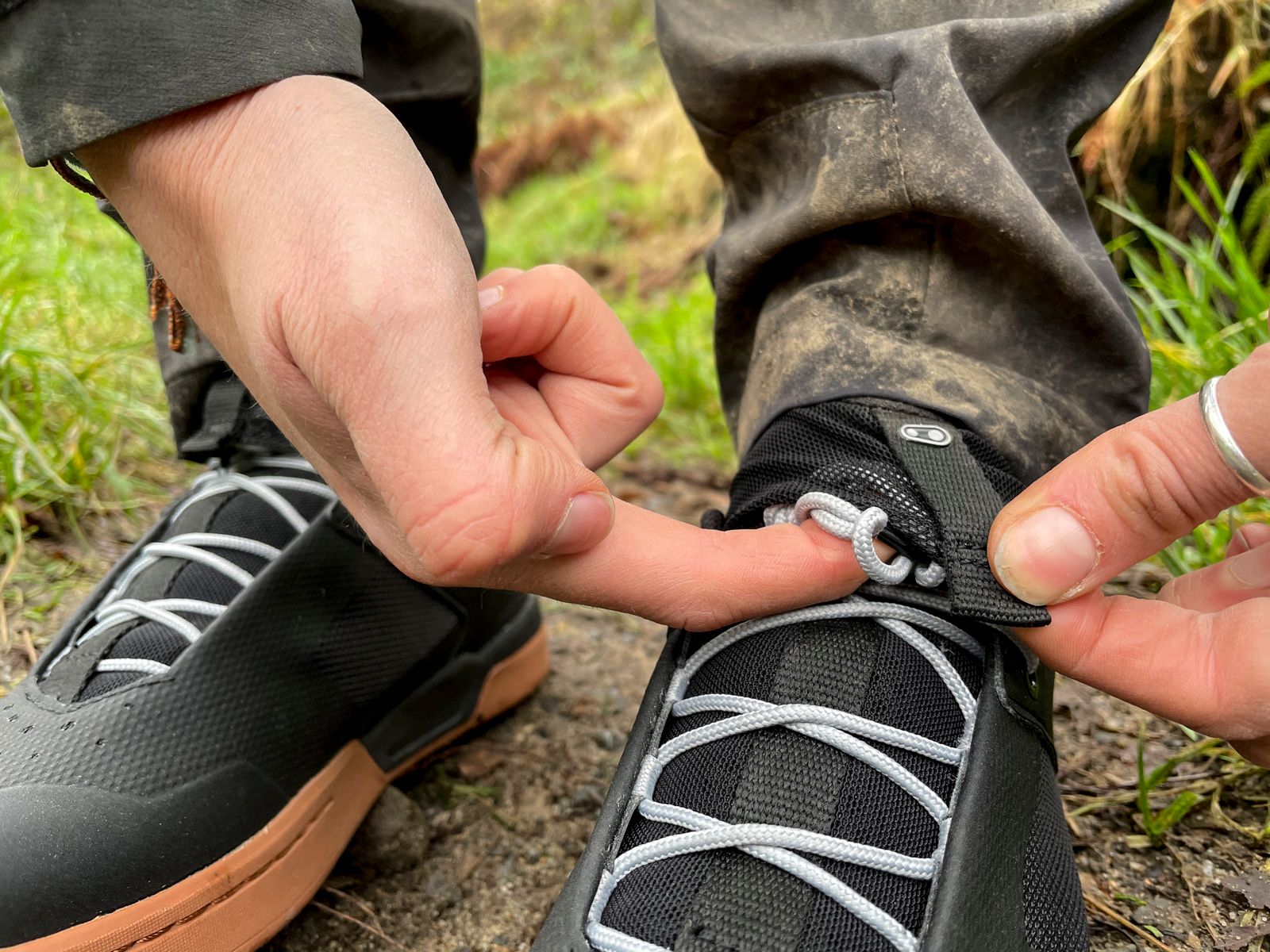
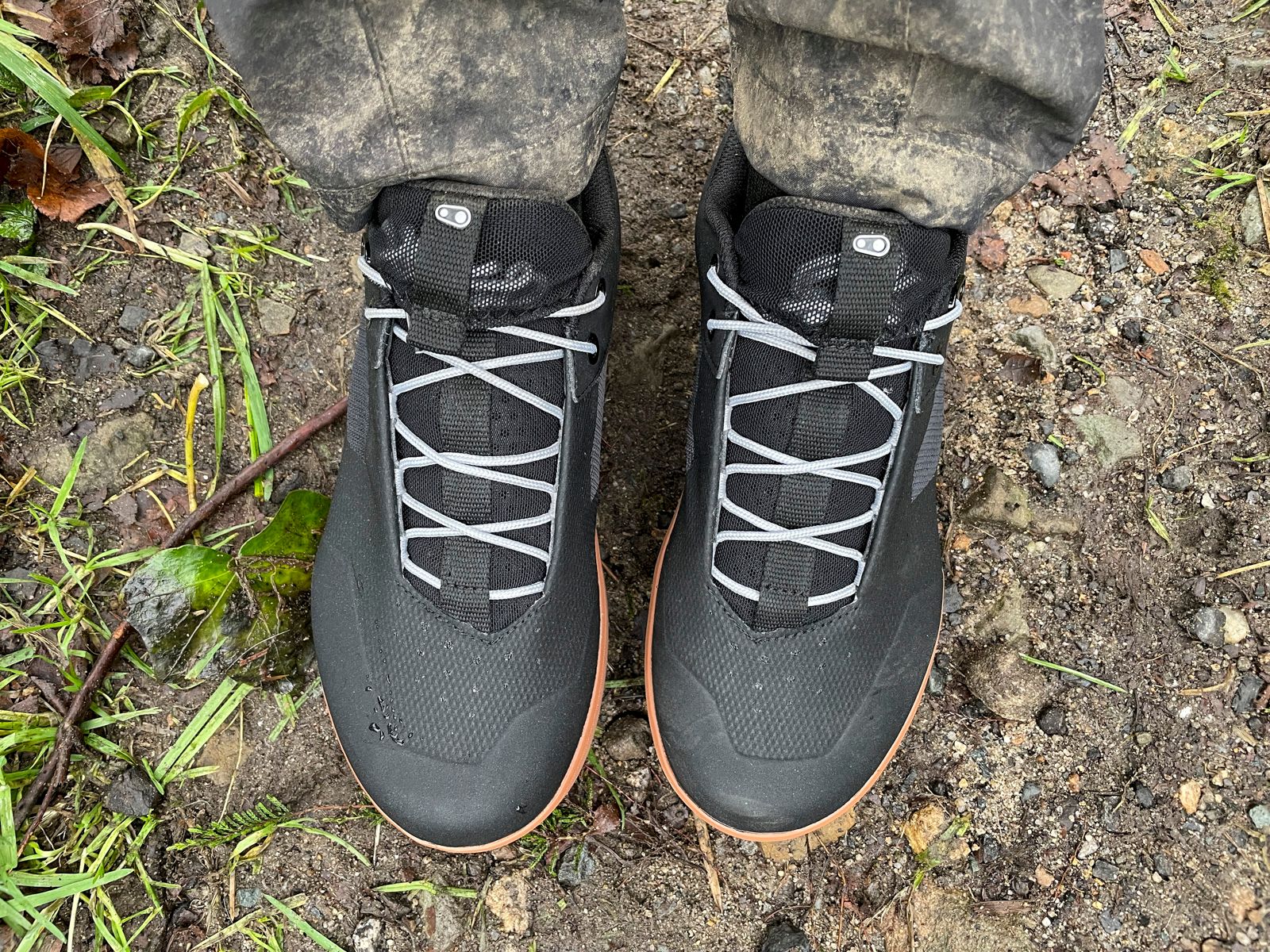
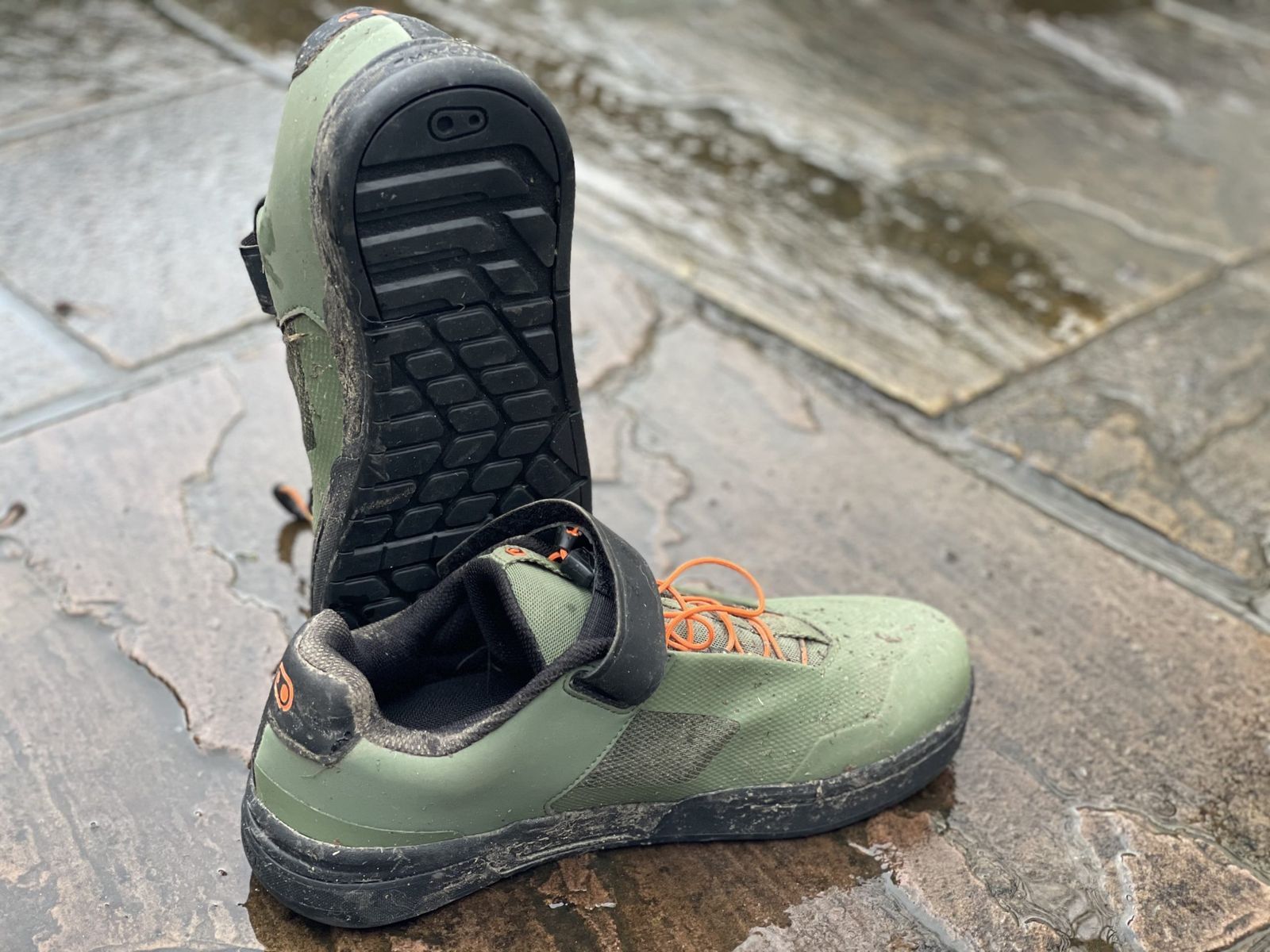

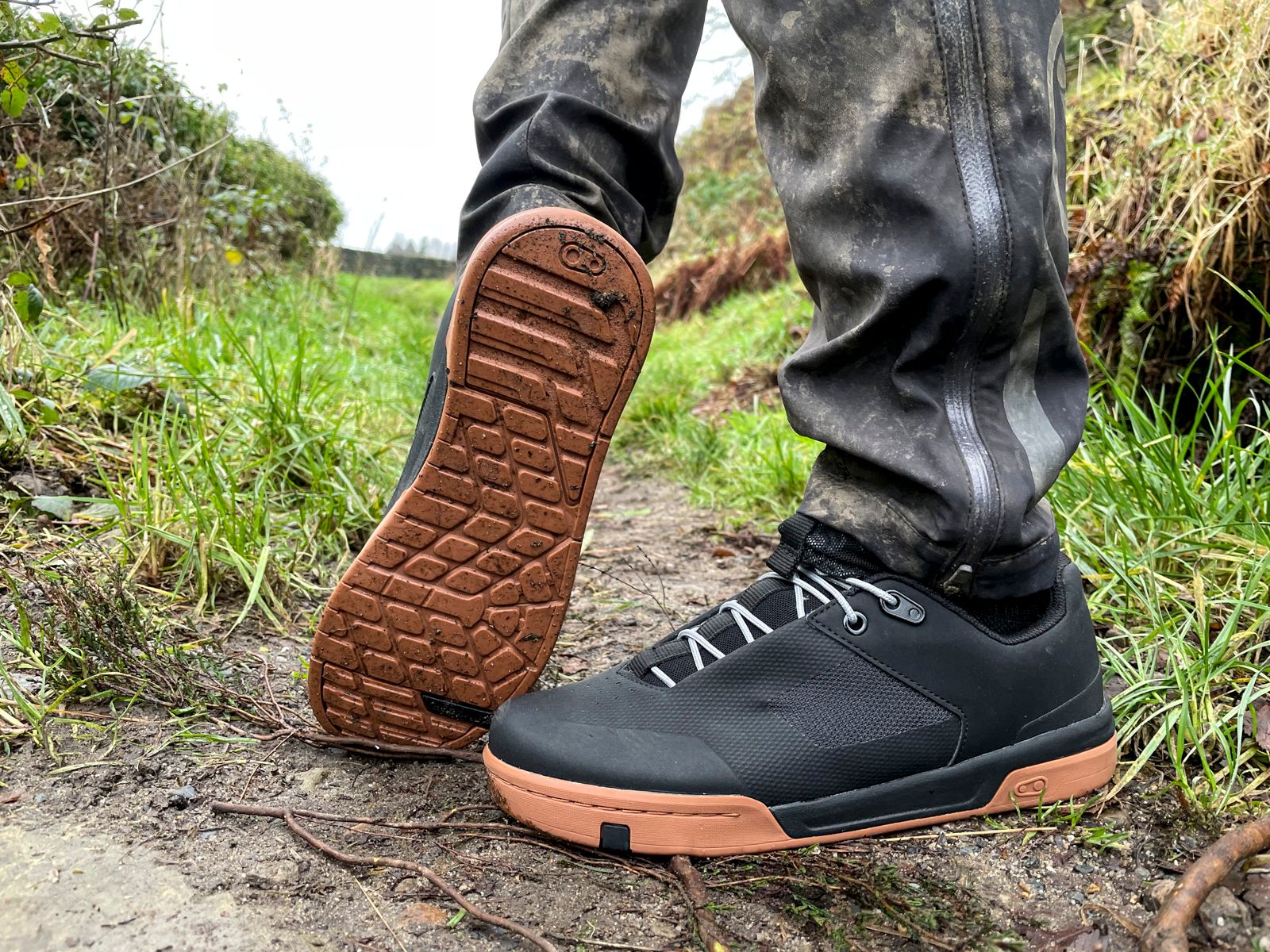

Do the “E” shoes have a walk assist mode to help you get up the hills when pushing?
Thanks folks, nice review. Giving the opinions of more than one person is a good idea.
Going to hold out for a flat winter shoe/boot that does keep water out.
Have any of the stamp testers tried VAUDE Moabs, how do these compare (specifically the boa versions).
@nixie I have tested the Vaude AM Moab and the Stamp Lace. The sole stiffness is pretty similar, the fit of the Stamps is a lot narrower (I found the Vaude quite generous and could wear really thick socks in them), and as for grip… I’d have to say the Vaude are stickier on a wider range of pedals. Generally, I can throw those on with any flat pedal and not think twice about how much grip I’ve got. I have spent over a year with those though, and only had a handful of (very wet) rides on the Stamps.
Thanks @AmandaWishart. Interesting on the grip front. The vaude do seem to grip really well on both my oneup comp and nukeproof plastic pedals. Sadly the upper started to delaminate around the toe box on my tech boa versions.
Don’t quite get the design choices on these. I’ve got the Mallet’s and there a very comfortable and solid shoe but the ‘best’ shoe would have the sole of the Mallet-E (which is slightly, but not a lot, more ‘aggressive’ and has a few bits that come up around the side) and the ‘race zone’ cleat position of the Mallet.
Neither the sole nor the race zone seem to have any disadvantages so can’t see why they have two slightly different models.